- Fishing Kayaks
- Paddle Boards
- Life Jackets (PFDs)
- Boat Storage
- Paddling Clothing
- Paddling Accessories
- Cool New Gear
- Submit a Review
- Paddling Near Me
- Paddling Locations Map
- Download the Go Paddling app
- Paddling Trips
- Kayaking Trips
- Canoeing Trips
- Share Your Knowledge
- Add a Paddling Location
- Add Your Trip
- All Articles
- Getting Started
- Boats & Gear
- Techniques & Safety
- Camping & Survival
- Join Newsletter
- Create Account
- Message Boards
- Classifieds
- Photo of the Week
- Free Weekly Newsletter
- Trip Finder

Wabakimi Prov. Park (Kopka River) in Ontario
Trip overview.

The reward: a couple of days of the most stunning combination of river and rock that we have experienced in more than thirty years of paddling in northern Ontario. Now that awesome feeling of standing above and below the Missinaibi River's Thunderhouse Falls has some new company. Read on to find out more about what the Kopka has on offer!
How We Got There For the second year in a row, we took the train! VIA runs The Canadian three times a week from Toronto through NW Ontario on its way to Vancouver. Canoes are welcome on the voyage for a fee of $50. VIA was having a 60% off seat sale in early July when we bought our tickets so for about $750. we got ourselves and the canoe there and back- not a bad deal considering it is 1800+ km to the starting point!
There had been other paddlers on the train with us- one party of four actually got off at Armstrong Station to meet up with their outfitter. They would be setting off the next morning on a trip that would include the Kopka from Lake Kenakskassis on down. The other group got on at Armstrong Station and then off at Allanwater Bridge with us. Instead of the rented cabin option (or tenting on the Lodge property for a fee), they found a clear space on the other side of the tracks from where we had debarked. When I went to see how they had fared the next morning around 8:15 they were all but gone.
Day One: 20 km. over 5 1/2 hours From Allanwater Lodge to a small island camp in the narrows just south of Antler Lake
As we paddled south on McEwan Lake we spotted the first of many eagles that we would see during our trip. It has become a bit of a tripping joke but we always interpret this is a good omen, imagining that Zeus is keeping a close and caring watch over us as we glide through his world! If nothing else, it's a clue that we're paddling somewhere approaching wilderness - never a bad thing!

We picked an island in the narrows just south of Antler Lake as our Day One campsite. It would be the first of three islands in a row as we made our way to the Kopka headwaters at Redsand Lake.
We got to our camp site at about 3, having spent 5 1/2 hours paddling and portaging. Les, a paddler in one of the other canoe parties on the train, had proposed 4 km per hour as the typical speed that most groups average out to. We had a chuckle when we did the math at the end of the day: Les' Theorem worked!
Day Two: 21 km. over 5 1/2 hours From island camp in the narrows just south of Antler Lake to island camp at north end of Harmon Lake
As we paddled to the north end of Harmon Lake, we met in one thirty-minute period all the people we would see for a while five motor boats with two or three people in each. The fishing was great, they told us as we paddled by. The next time we saw anyone was eight days later on the far side of the Seven Sisters section of the Kopka below the third set of waterfalls.
We contented ourselves with day after day of eagles, hawks, ravens, loons, ducks and assorted waters edge life like otters and beavers. Not seen at all were caribou, moose, bear. Camp visitors were limited to the occasional chipmunks. Most evenings we hauled our food pack 10 feet up some tree branch (although I must admit that it sometimes seems like something we do just because we have always done it).

We got to our "okay" campsite around 5 - it was a breezy spot with a nice flat rock lounge area. The tent itself rested on some moss-covered rock; the Thermarest pads (a NeoAir and a Prolite 4) definitely make the ground a non-issue. Well, almost. One side of the tent had a bit of a root sticking up and we had to reach under to do some surgery.
Day Three: 31 km. in 8.5 hours From island camp at north end of Harmon Lake to island camp 2 km east of the Graham Road on unnamed lake (part of Kashishibog River system)
We reached the day's camp site - another spot used by nearby fishing lodges when doing a camping overnight with their guests?- after some tough afternoon paddling into a SW wind that was whipping up the water. We had misread the portage info taking us across the Graham Road and ended up portaging 200 meters on another trail instead of the 50 or so had we lined up the first stretch of rapids to the bridge.
The island campsite had tables and shredded blue tarps were tucked under them. A 30-meter trail led from the fire circle and the camping area to a toilet sitting above an open mound of shit and paper. It definitely was the underside of the camping experience!

Perhaps if we could do this day over again we'd do it differently. Instead of paddling along the eastern shore that we ended up on, we'd cling to the western shore in hopes of getting more protection from a very strong SW wind. As it was, we were definitely shaken by the 1 1/2 feet swells and whitecaps that we needed to cut across to get to where we wanted to.
We finally went with the waves as they pushed us on the sandy shores of a small bay. We waited for a while, hoping that things would settle down but it eventually became clear that the day was over. Amazingly enough, we found a sheltered-from-the-wind and not-bad flat area for our MEC Wanderer 4 tent (all 8′x8′ of it) and settled in for the day. While we hate sitting around we certainly didnt want to deal with the consequences of sitting in the middle of a wind-whipped lake with an overturned canoe and sunken packs. The food pack that night was tucked away on the beach some distance from the tent. We didnt have a chance to think about canoe scratches this day!
Day Five: 14.5 km. From rough camp on E side of Sparkling Lake to Redsand Lake camp on E point
We left our previous night's camp by 7 a.m., intent on putting in 10 km or so before breakfast. We stopped at the top of a scenic set of rapids on the Kashishibog- the last set before the portage into Redsand Lake itself. It was already a bit windy and the canoe acted as a bit of a windscreen as we enjoyed my brother's favourite filtered Kenyan AA coffee to wash down the oatmeal/berries/chia seed breakfast concoction we usually have.
The 500-meter portage from a small bay on Kashishibog Lake took us into the headwaters of the Kopka River. From this point on we would be paddling with the current!
Unfortunately, the very strong NW wind presented us with a more immediate challenge- just getting to the campsite on the east side of the Redsand Lake as you paddle NW from the end of the portage trail. We dug in hard and after quite the effort (and keen awareness of the danger) we managed to pull in at the campsite. Up went the tent; down came the rain. The wind continued to blow hard. Two rough days in a row and we started to worry about making it to the end point on time if the wind didn't let up for a day or two. Up ahead were almost 50 kilometers of mostly lake paddle to do before we got to the north end of Uneven Lake. A NW wind would make that a real grind.

We were on the water by 7; there was little wind and the water was calm compared to its state twelve hours before. Parts of our early-morning paddle seemed almost dreamlike as we made easy progress across cloud-speckled Siess Lake.
We finally stopped for breakfast about 15 kilometers later on a point half way between Siess and Waterhouse Lakes. The sun was shining; it felt great to be moving.
Not having to do a half-dozen portages in a day will definitely increase your kilometer count. We continued on, paddling down Waterhouse Lake, across Gaal Lake, down the southern piece of Uneven Lake, and then after a bit of narrow-river paddling, back to Uneven Lake (the northern piece). Almost is if to remind us that we were not masters of our own fate, the NW winds made this last stretch "interesting". We paddled close to the shore once we crossed the bay with the outpost on it. (There was no sign of anyone there.) A while later we were at the campsite on the west side of Uneven Lake about three km N of the outpost.
The day was done and we felt great; we had managed to win back our "spare" day for possible future use and the day's paddling had actually been quite enjoyable, given the closed-in feel of stretches of the river. We'd be getting even more of that the next day- with twenty sets of rapids thrown in as a bonus!
Day Seven: 24 km. over eight hours From Uneven Lake camp to camp on island of lake just east of Sandison Lake
A delightful stretch of the Kopka greeted us this day, different from the 47 km of lake paddle that characterized the previous day. "Delightful" because until you enter Sandison Lake you are always aware of both river banks; the scale of things is just right. It would have been even more agreeable with a bit more water but you take what you get. I'm glad we didn't miss out on this part of the Kopka experience.
We stopped for the night a couple of portages east of Sandison Lake. The campsite was on the NW point of an island on the small lake. A bit of site rehabilitation was required- eg. clearing of deadfall. Below the tent site was a small bay and behind us lots of deadfall. At my insistence the food bag getting lighter every day by 4 pounds! went up again for the night.
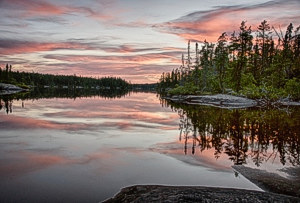
When we came across a camp spot at the top of a pretty little waterfall, we decided quickly that our day was done. We had actually planned to paddle a few more kilometers but figured the chances of canoeing into a second site as perfect as this one were remote.
It was 2:30 on a beautiful, sunny afternoon and the location was perfect for lounging and rambling around, as well as pitching a tent and washing up. We'd also get to play with the dslr camera gear that had spent too much of the trip hidden away from the realities of a canoe trip. There was a fifty-meter portage to get around the waterfall but that could wait until the next morning.
This camp site may have been our favourite of the whole trip, helped of course by the weather and the stunning sunset we got to watch.
Day Nine: 18 km. over 5 hours From Waterfalls camp to Kopka camp on lake between 2nd and 3rd Falls
We left our idyllic camp at 8:30 and before 10 we were on the other side of the 400-meter portage at the north end of Lake Kenakskaniss, a bit apprehensive about potential wind problems on the lake from the SW. The SPOT Connect data shows that a bit over an hour later we were getting close to our first and longest portage (750 m) in the Seven Sisters section of the Kopka. We had been spared the energy-sapping challenge of paddling down the lake into a headwind.
We had to laugh when we saw the "This is not the portage! Keep on going!" sign above a set of swifts as we left Kenakskaniss and headed for the first and longest of the portages around the Seven Sisters. A few minutes later we reached the actual portage and less than thirty minutes later were sitting at the far end with our canoe and packs, thinking back at the portage trail.

Luckily for us it was not a rainy day as we passed through. It would have been a bit more slippery in our no-grip Bean Boots had it been. Our one regret is not having gone back to see exactly what it was we had portaged around. We did not make the same mistake for the portages around the three dramatics sets of falls coming up.
If you're wondering about the "Seven Sisters" label, a note on Ken Kokanie's Kopka maps provides a nice explanation: "the canyon portion of the route is made up of gruelling portages (poor footing and steep inclination or declination) that avoid a series of 7 severe drops in elevation". The topos show an elevation of 1245′ for Lake Kenakskaniss and an elevation of 1030′ on the Kopka beyond the last set of falls. That is a 215′ drop over at most a two kilometer stretch. This fact makes the Seven Sisters stretch of the Kopka River the most dramatic bit of Ontario river that my brother and I have gotten to sample in over thirty years of paddling in northern Ontario.
Our Day Nine campsite edges out the previous night's site for best site of the trip. It is located at the end of the second set of waterfalls on a beautiful small lake lined on three sides with up to fifty feet vertical granite rock face. According to the federal government topo map, the historical (but no longer existing) Mink Bridge Portage ended here.
The campsite itself is quite large and has room for three or four tents; the spot we chose was one tucked away from the shore and nicely sheltered from the elements.
Day Ten: 17 km. From Kopka camp between 2nd and 3rd Falls to start of portage from Wigwasan Lake to Bukemiga Lake
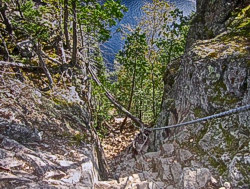
Now we had to deal with the canoe. Amazingly enough it was down in five minutes at the most. Max came up to the top and I went down the first two drops- about 17′ and the length of the canoe. I grabbed the nose of the canoe as he lowered it on a rope attached to his end. When I was able to put my hands on the yoke I just flipped it over and onto my back and walked it down to the shore.
Now I know that I could not have done that with a 75 lb canoe; being 42 lb made it possible. It also didn't hurt that it was a sunny day and the ground and rocks were not wet and greasy; neither was wind an issue.
Our conclusion: the Mountain Goat Portage presents a challenge you don't often face but in the end it is not that big a deal.
Day Eleven: 7 km. From Wigwasan Lake side of portage camp to take-out point at end of Bukemiga Lake Access Road
The start of the portage trail from Wigwasan to Bukemiga is obviously a popular spot with weekenders; there is room for a dozen tents. At the north end of the site were three overturned boats; the very messy toilet area 30 meters or so in the bush showed signs of heavy use. For the first time since Antler Lake on Day One we were able to use our tent pegs; all the other sites had no more than a veneer of moss or soil over rock.
We had a bit of time to kill when we got to the end point- well, six hours to be exact. It was a Thursday when we pulled in and there was no one in any of the six trailers In what seems like an unofficial trailer park at the end of the access Road from Highway 527 to Lake Bukemiga.
In retrospect, we should have camped the previous night at the beautiful campsite just below the third and final set of falls. Or we could have paddled a bit further down the Kopka- a few more kilometers down to Kopka Lake itself. But we didnt want to risk the possibility of being windbound on Wigwasan or Bukemiga and missing our take-out connection or the train the next day, so we had played it safe and camped at the start of the Wigwasan/Bukemiga portage instead. Therefore, a 1 1/2 hour paddle on the last day!
About fifteen minutes early (4:45) our Wabakimi trip fixer, Clement Quenville, arrived to transfer us to Armstrong Station, thirty kilometers north of the take-out point. The community of 300 is at the end of Highway 527 from Thunder Bay and it is also a stop on the VIA train route which would take us back to Toronto. (There are only three eastbound trains a week so if you miss yours it is a two or three day wait!)
We got to Armstrong at about 5:30 so we had that evening and the next morning to ramble around and visit Gail's Grill and Bakery for both supper and breakfast. A restaurant we had visited on our first visit to Armstrong - E&J's - looked like it was closed.
The next morning we moved our gear and canoe from the room to the spot by the tracks where the VIA baggage car would be stopping at the 9:50 official arrival time. Having heard stories of the train arriving early- and then leaving early!- we were there by 9:15. The fact that no locals were there should have been a clue to us. By the time noon arrived, local vehicles were starting to pull in! The train arrived shortly afterwards.
See my Wordpress blog for more pictures and more of this trip!
The Ken Kokanie website is, as always, a goldmine of ideas for trips, as well as for info and maps. We found most the maps we needed for our trip here. I think it was this website that first made me aware of the Kopka River. And then it seemed to pop up everywhere - in Cliff Jacobson books, even in Kevin Callan videos!
I did also purchase a nicely detailed set of maps online from wabakimimaps.com , a site owned by Lawrence Mills of North Bay. He put together a map package of the complete route from Allanwater to the take-out point east of Bukemiga Lake. You can see them here. Last summer we used his Flindt River map set and were quite impressed with the format and amount of information provided.
Not used this year, but absolutely essential for our first two trips in Wabakimi country, were volumes 1 and 2 of the Wabakimi Project's map sets .
Trip Details
- Trip Duration: Extended Trip
- Sport/Activity: Canoeing
- Skill Level: Intermediate
- Water Type: River/Creek (Up to Class II)
Trip Location
Kopka River
Ontario, Canada June 27 – July 6, 1997
By Mel Baughman, Hayward, Wisconsin For a complete journal with more details, contact the author—[email protected].
Crew : Mel Baughman, Judy Geck, John Quaife, Guy Mueller

We drove from the Minneapolis/St. Paul Area to Grand Marais, MN and stayed overnight in John’s cabin.
We drove for five hours to Mattice Lake Outfitters just south of Armstrong, arriving at noon. During the afternoon we flew 55 miles on two separate Beaver airplanes to Redsand Lake, headwaters of the Kopka River. While flying across the lower Kopka River, we saw three magnificent waterfalls we would need to portage around later.
Knowing we had to paddle just 75 miles in 7 ½ days, we camped immediately. Our campsite had a large slab of granite along the shore and a cushion of moss and lichens beneath our tents which were protected from the wind by jack pines and spruces. The only distractions were a fishing outpost cabin a quarter mile away. During the afternoon we saw a couple of motorboats and a float plane landed at the cabin. We fished for a few hours catching seven northern pike from two to four pounds. While paddling around the lake, we saw two eagles, several loons, and one beaver. No-see-ums and mosquitos were a minor nuisance.

Redsand Lake was dead calm as we headed north. Two eagles flew across the lake. A fire had burned trees around the north end of Redsand and the south end of Siess Lake. There was another cabin at the north end of Siess Lake. We covered 11 miles of flat-water by noon. Mergansers and loons were frequent visitors. We fished briefly at a few mid-lake rock piles and caught a couple of small northerns. By 3:00 we made Gaal Lake and found a mediocre campsite on an island. It had a good canoe landing and decent tent sites, but not much open space. Guy and I caught several small northerns in the lake then headed downstream until we came to the top of a rapid that we did not want to descend. From there we walked downstream along the rough, brushy shore. At the base of the rapid, we caught four walleyes and several northerns. Our campsite was at mile 58. We canoed 16 ½ miles.
After leaving camp we soon entered a narrow mile and a half of river. It was shallow and weedy with a sand bottom, except through a couple of narrow, rocky chutes where fallen trees spanned the river. We dragged over them and continued. We caught a few walleyes and northerns in holes below rapids. In a mile-long lake we caught several northerns and one walleye. It was windy and we stopped for a rest break in an old campsite. Then we entered another mile and a half of narrow river and again dragged through a couple of rapids with fallen trees. On Uneven Lake we paddled east then north, taking rest breaks about every 1 ½ miles. One motorboat passed us and we saw a fishing resort with at least five cabins in the northern section of Uneven Lake. We continued past it another two miles spotting two beavers along the way, and then found a campsite perched on a small hill 20 feet above the lake. It was our best site yet on a breezy promontory with an excellent view up the lake. After pitching tents we fished around some nearby islands and caught numerous small northerns. Our campsite was at mile 45 ½ on the north end of Uneven Lake. We paddled 12 ½ miles today.
About 1/10-inch of rain fell last night, but the sky was clear when we launched our canoes. Our trip began with four miles of flat-water on a lake and ended with six and a half miles of river. The river was 40-50 yards wide and shallow with a very slow current, but there were numerous rapids and one portage around a series of rocky ledges. Fishing often, we caught several northerns and walleyes. In mid-afternoon we started saving walleyes and kept four for a fish fry. We saw an osprey as we entered Sandison Lake. Our campsite was not easy to find, but it had been used before and was an excellent site with lots of flat bedrock areas and two good tent sites. Spruce and jack pines offered wind shelter. The air temperature was cooler today, maybe 70 for a high. We covered 10 ½ miles ending at mile 35 on Sandison Lake.
Rain fell through the night and the wind blew. We slept late and awoke to 54 degrees and gray sky. The river water was 67 degrees. While paddling away from camp I soon spotted an osprey. We had gray sky and wind all day. Light rain began when we stopped for lunch on a house-size boulder on the river’s edge. Rain intensity increased during the afternoon and continued until we went to bed, drenching all of us. Fortunately it slackened to a mist at the end of the day. Although most of our mileage was on lakes, a half dozen narrow stretches of river with rapids added excitement. We portaged three times at miles 34, 28 ½, and 25 3/4; lined once; and ran several more rapids. We unexpectedly found a logging road crossing the river at mile 28 ½ just upstream from the portage trail. That particular rapid was a very pretty series of drops through a rocky gorge, but the portage trail was littered with fallen trees making the portage difficult. The third portage also had some fallen trees, but it was shorter and easier. We fished at several rapids catching walleyes and northerns. We had difficulty finding a campsite, and finally selected a huge, breezy granite outcrop. A few trees on top were used to hold up the ends of our rainfly. We pitched tents on deep moss back in the woods. Mosquitos were voracious, even during the rain. We had not seen many until today. Our camp was at mile 25 after paddling 10 miles.
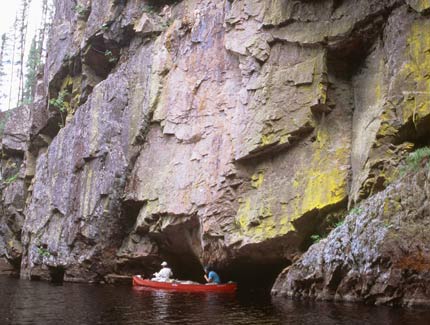
A moose browsed near our tent last night. I heard it stripping vegetation and tromping through the brush, but didn’t see it. The sky was gray when we awoke, but the rain had quit. Most of our canoe route was through narrow lakes, but we had three portages at miles 24 ½, 22 ½, and 19. Fortunately the portage trails were clear of fallen trees. The rapid at mile 22 ½ had a series of picturesque drops. There also were several other interesting rapids to run. We saw one bald eagle. There was an outpost fishing cabin on Hook Lake just above Kenakskaniss Lake. Fishing for walleyes and northerns was excellent below the portage at mile 19. Our camp was at mile 17 on Kenakskaniss Lake. It was a well-used campsite with plenty of good tent sites and a large open space of bedrock. A car-sized boulder at the water’s edge served as a windbreak for our cooking stoves. Clouds dissipated during the day. The wind blew moderately, but died down in the evening. Mosquitos came out as the wind subsided.
After a leisurely breakfast, we quickly cruised 3 ½ miles to the outlet of Kenakskaniss Lake. There appeared to be many potential campsites on the south end of the lake. We did not see them up-close, but the bedrock shelves receding into spruce and aspen forest looked inviting. This lake was bordered by the first large aspen stands we saw on the trip. Upriver the forest was mainly conifers with only scattered birch and aspen. We paddled through a short rapid at the lake’s outlet and had fun catching walleyes in the pool below. A short distance downstream we ran another rapid, but had to drag through the end of it to avoid a hazardous, rock-filled drop. Then we encountered a hazardous portage over a field of boulders that bypassed a long rapid. Below it we encountered the first of three huge waterfalls. We had seen these from the air and had heard wonderful tales about them from other canoeists before our trip began. They more than lived up to our expectations. An Ontario Ministry of Natural Resources brochure said the river drops 250 feet through these falls. The first fall had at least three major drops totaling perhaps 100+ feet. The river twisted around a curve and was nearly inaccessible from shore in some places so I couldn’t see all of it clearly. The portage trail was perhaps 100 rods and had a steep downhill pitch at the end. We were able to hand the canoe down the rock ledge without using ropes. Paddling into the pool below the fall, we saw its last, spectacular drop that was not visible from shore. It was a gorgeous site.
Then we made a very short portage (10 rods) around a rapid. Just below that we encountered the second portage and fall. This portage was similar in length to the first, but at one place it required walking 10 feet across logs sunken below water line in a marsh and then lifting the canoe onto a rock ledge and wrestling it up a 20′-high rock hill. The trail was steep at the end, but we could carry the canoe down the slope. This second fall was a drop of about 80 feet through a foaming waterslide. The small lake below had outstanding scenery: a 20-foot waterfall on a creek, a deep rock cleft with 100′ cliffs that were painted with colorful mosses and lichens, and several other beautiful, multi-colored cliff faces. We considered camping on this lake, but the next portage appeared challenging so we decided to get it behind us.
The portage around the third waterfall was short (about 30 rods), but ended in a 130-foot drop through a narrow, rock crevice. This drop began with a shear, 15-foot cliff that was followed by a rock slide that descended steeply to the river below. There was a heavy, fixed rope down the cliff and steep incline. We used it and our canoe lining ropes to lower ourselves, gear, and canoes down. If we’d had a carabiner, we could have used it to slide our gear down the fixed rope. This would have saved wear and tear on our gear as well as time. Instead our procedure was to tie a piece of gear (e.g., canoe, pack, bundle of fishing poles) to the end of a 3/8″ diameter lining rope, wrap the rope one turn around a tree at the top of the cliff, and lower it slowly downhill. We used most of three 50-foot lining ropes tied together at the ends to reach the river below. We had two people on top and two below the cliff. This portage took us about an hour and a half. A thunderstorm blew through as we negotiated this drop, but it didn’t interfere with our work. After loading our gear into canoes, we paddled around the corner to see the falls. Here the river dropped about 80 to 100 feet in two falls. We took a few pictures but the sky was dark and rain was falling. This one-mile stretch of river with its three huge waterfalls, cliffs, and crevices was one of the most beautiful sights I’ve seen east of the Rockies. It made the whole trip worthwhile.
We paddled a quarter mile downstream and set up camp in the rain. The site was small, but 50-foot cliffs backed by a 400-foot hill across the river were very pretty and we could get the greatest echoes I’ve ever heard. Rain stopped when supper was ready. Small patches of sun and blue sky drifted by during the evening, but more rain appeared imminent when we went to bed.
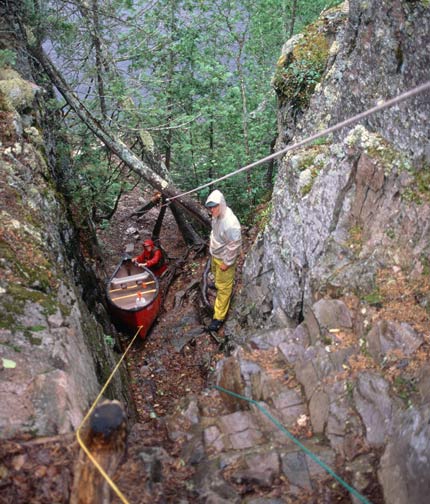
After breakfast we paddled upstream to view the cliffs and third waterfall that we had seen only briefly the day before during a rainstorm. They were beautiful sights. I had expected to see other people around the waterfalls, but we had them to ourselves. Then we canoed 12 miles to our takeout at the southeast corner of Bukemiga Lake, arriving at 12:45 pm. Enroute we ran a rapid entering Wigwasan Lake and portaged from that lake into Bukemiga. We saw several motorboats on Bukemiga. Before starting the drive home, we drove a mile to where the Kopka River crossed the road and bathed in the river. About 6:00 p.m. we arrived at John’s cabin in Grand Marais, sorted out the group gear, and then ate supper in town.
We were up by 5:30 a.m. and ate breakfast at S.O.B. in Grand Marais. Guy and I headed home together. John and Judy planned to remain in Grand Marais a few more hours to visit John’s mother. Guy and I arrived in the Twin Cities at noon.
Topographic Maps 1:50,000: 52 G/16, 52 H/13, 52 I/4, 52 I/3 [1:250,000 scale maps are not adequate for navigation on this river.]
Float Plane: Mattice Lake Outfitters Ltd., (Wabakimi Air Ltd.), P.O. Box 157, Armstrong, Ontario, POT 1AO, (807) 583-2483; toll free : 1-800-411-0334
Trip Costs: $342 U.S. Per Person, including: 189 float plane, 8 car shuttle, 30 car gas, 45 food, 16 restaurants, 23 fishing licenses, 28 topo maps, 3 long distance phone

YMCA Camp Widjiwagan: Generations of Exploration
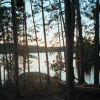
The Surprise on Draper Lake
Leave a reply cancel reply.
Save my name, email, and website in this browser for the next time I comment.
Notify me of follow-up comments by email.
Notify me of new posts by email.

• Disclaimer and Use Policy
https://tigaprediksi.com/
https://armynavysuperstores.com/
https://dutawarta.com/
https://woaynews.com/
https://pupwb.org/
https://haraznews.com/
https://toysmatrix.com/wp-includes/slot-gacor/
https://girimenangnews.com/
https://geprekbensuindonesia.com/
https://everythinginclick.com/wp-content/uploads/slot-bonus/
https://caraslot.com/wp-includes/slot-bonus/
https://www.casablancahire.com/blogs/wp-includes/slot-bonus/
https://www.genesiscalbeautystudio.com/wp-includes/slot-bonus /
https://www.hookdonthehudson.com/
https://bimbelruangprestasi.com/wp-includes/slot-bonus/
https://thenews100.com/
https://expertautokool.ee/wp-includes/slot-bonus/
https://www.padslakecounty.org/wp-content/uploads/rekomendasi-situs-slot-gacor-gampang-menang/

Compare items
- Total ( 0 )
- About Northern Ontario
- Canadian Canoe Culture
- Explore Indigenous Culture
- Group of Seven
- How to Fish
- Plan A Road Trip
- Plan Your Fall Trip
- Plan Your Summer Trip
- Plan Your Winter Trip
- Where to Eat
- Algoma Country
- Northeastern Ontario
- Sault Ste. Marie
- Sunset Country
- Superior Country
- Thunder Bay
- Motorcycle Touring
- Outdoor Adventures
- Snowmobiling
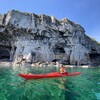
The Ultimate Guide to Canoeing & Kayaking in Wabakimi
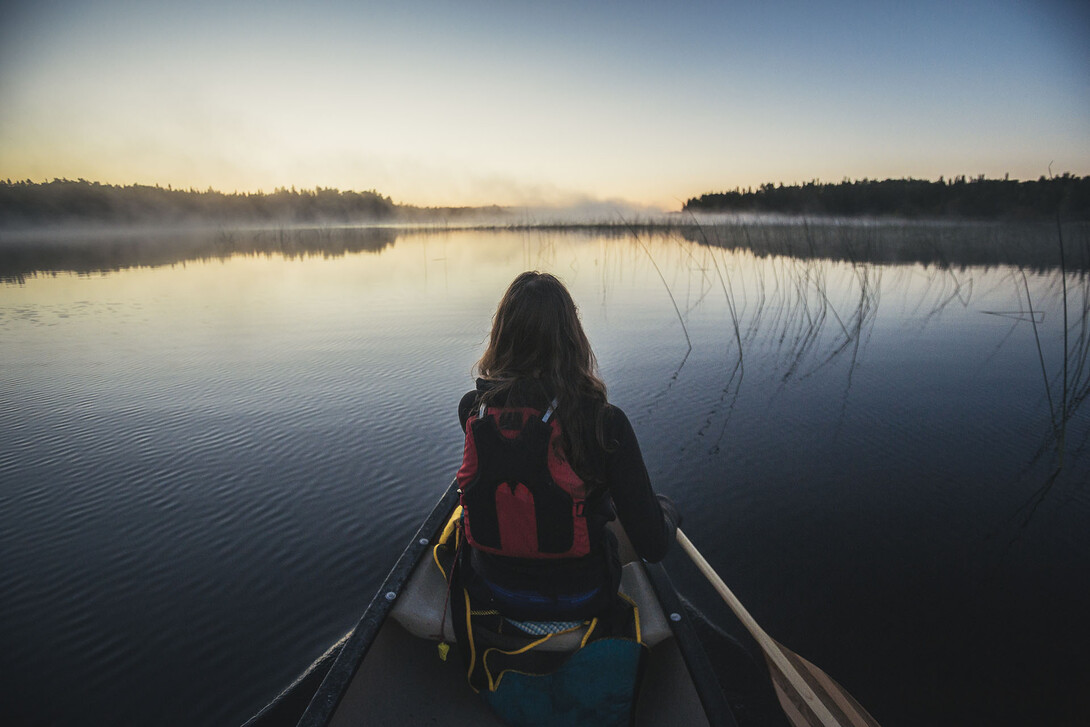
Wabakimi Provincial Park is a vast wilderness area in northwestern Ontario. An abundance of lakes and rivers makes Wabakimi a dreamscape for paddlers; it ranks as one of Ontario’s largest parks, spanning a landscape much larger (and infinitely wilder) than central Ontario’s Algonquin Provincial Park. Such a seemingly remote wilderness is much closer than you’d think. The city of Thunder Bay is your gateway to Wabakimi. Thunder Bay is easily accessible by road, rail and air, and located within a day’s drive of many Midwestern cities. Once you arrive here, it’s only a three-hour drive on Highway 17 and Highway 527 to the park entry point in Armstrong, Ontario, on paved roads.
Wabakimi boasts more than 2,000 km of lake and river canoe routes and more than 500 backcountry campsites. Planning a paddling adventure in such an immense landscape with so many interconnected waterways can be intimidating. We’re here to help! This article provides an overview of the best Wabakimi canoe routes, outlining a selection of great waterways. We’ve also identified Wabakimi outfitters offering canoe rentals and guided trips, and picked out some choice destinations for Wabakimi kayaking, too. It’s time to start planning your paddling adventure of a lifetime in Wabakimi Provincial Park.
Wilderness Rivers of Wabakimi
Wild rivers flow across the boreal landscape of Wabakimi Provincial Park like pulsing arteries. There is a river for every type of wilderness paddler in the Wabakimi backcountry, ranging from relaxing, smooth-flowing waterways to challenging and exciting whitewater descents. Here are descriptions of some of Wabakimi’s best rivers for canoeing.
Allanwater River
The Allanwater River is a great whitewater river for advanced wilderness canoeists in Wabakimi Provincial Park. You can paddle the Allanwater River any time during the canoe season. VIA Rail is the easiest way to access the river, loading in Armstrong (see the list of outfitters below to help you make access arrangements). You can also charter a floatplane from Armstrong to the Allanwater River at Kawaweogama Lake. It’s a five-day downstream run from Allanwater Bridge to Wabakimi Lake. From there you can veer east, eventually returning to Armstrong, or lengthen your trip by descending the Ogoki River to Whitewater Lake.
Flindt River
The Flindt River flows along the western boundary of Wabakimi Provincial Park. It’s a pool and drop river with portages around all rapids and falls, making it a good choice for wilderness canoeists who would prefer to avoid whitewater. Get on the Flindt River from the VIA Rail whistlestop at Flindt Landing. From there, it’s a four-day downriver trip to Wabakimi Lake, where you can continue your journey back to Armstrong, extend your trip on the Ogoki River or loop back to the railway.
Palisade River
The Palisade River is named for its steep and stunning shoreline rocks, surrounded by a verdant boreal forest of spruce, birch, and cedar. It serves as a connector river, linking the core of Wabakimi, including Kenoji and Burntrock lakes. Expect great scenery and solitude on the Palisade. Long-distance trippers can use it to access even more remote lakes and rivers, including the Misehkow River.
Boiling Sand River
This small waterway flows from the VIA Rail crossing at Collins to Smoothrock Lake, in the southeastern corner of Wabakimi. It’s a great way to get a taste of the Wabakimi wilderness, and provides numerous options for connecting lake and river canoe routes.
Misehkow River
This tributary of the Albany River drains the northwest corner of Wabakimi Provincial Park. The easiest way to get here is to charter a floatplane to Rockcliff Lake. Expedition paddlers can use the Misehkow as a link between Wabakimi and the Albany, an immense waterway that cuts across Northern Ontario and offers immense potential for wilderness canoeing. The Misehkow is known for its solitude, great wildlife (moose are especially abundant), and feisty whitewater. This challenging river is not for the faint-hearted.
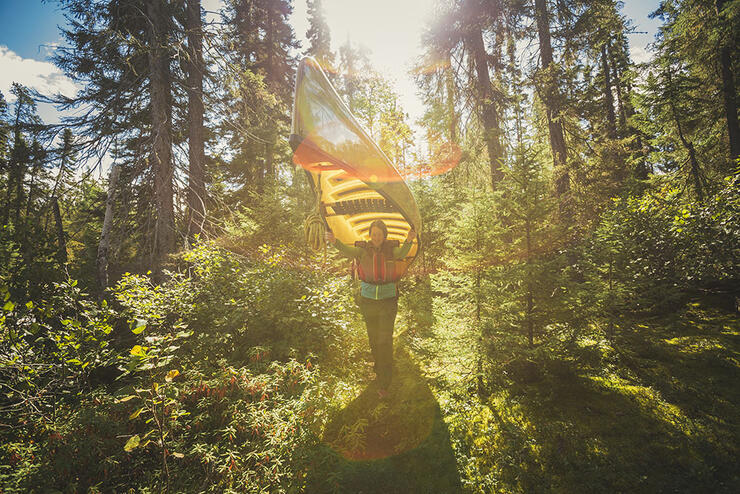
Kopka River
The Kopka drains Wabakimi and flows just south of the park boundary, feeding into Lake Nipigon. It’s a moderate whitewater river known for its awesome waterfalls—and notorious “mountain goat” portages. The Kopka River makes a great challenge for advanced wilderness paddlers looking for a rough and ready Wabakimi canoe route.
Wilderness Lakes of Wabakimi
The beauty of Wabakimi for many wilderness paddlers is that most canoe routes involve both rivers and lakes. However, with careful planning lake paddlers can map out routes that suit their preference. Here’s an overview of some of Wabakimi’s best lakes for paddling.
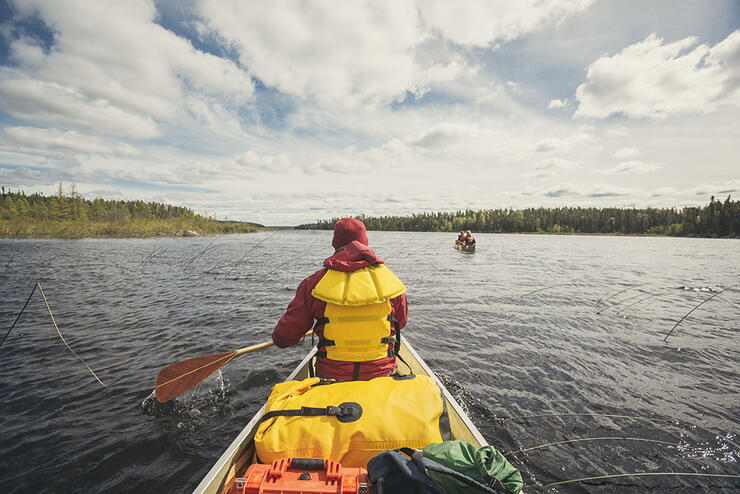
Wabakimi Lake
Wabakimi Lake acts like a crossroads of this wilderness canoe area, with paddling options radiating in all directions. Wabakimi Lake consists of two parts–the main lake as well as Lower Wabakimi, which is connected by narrows. These sprawling bodies of water are dotted with islands. The shoreline is a patchwork of mature boreal forest and smooth Canadian Shield outcroppings, making for excellent camping. Wabakimi Lake is a popular destination for fly-in canoe trips; with plenty of shoreline to explore, it is a great destination for a fly-in kayak trip as well.
Smoothrock Lake
This immense lake lives up to its name with plenty of exposed, glacier-polished granite, making it outstanding for wilderness camping. Smoothrock Lake is relatively easy to access, either by way of the VIA Rail stop at Collins and the Boiling Sand River, or starting from the road access point on Little Caribou or Caribou lakes, just west of Armstrong. Plenty of shoreline means you could explore Smoothrock Lake for days.
Whitewater Lake
This remote lake in the northeast corner of Wabakimi is graced with countless islands and a mixed shoreline of smooth rock and sand beach. Getting to Whitewater Lake can be challenging or easy, depending on your mode of access. The simplest option is to charter a floatplane from Armstrong. Or, if you have the time and motivation, you can paddle to Whitewater Lake as part of a Wabakimi canoe trip, by way of the Ogoki River and Oliver Lake (best for experienced river paddlers) or a portage route from the northern outlet of Smoothrock Lake. Either way, Whitewater Lake is a treat; one highlight is the abandoned Wendell Beckwith homestead, featuring the wilderness architecture of a brilliant mind who believed Whitewater Lake was the “centre of the universe.” See for yourself if Beckwith was correct. But hurry, the intricately built cabins are being left to rot.
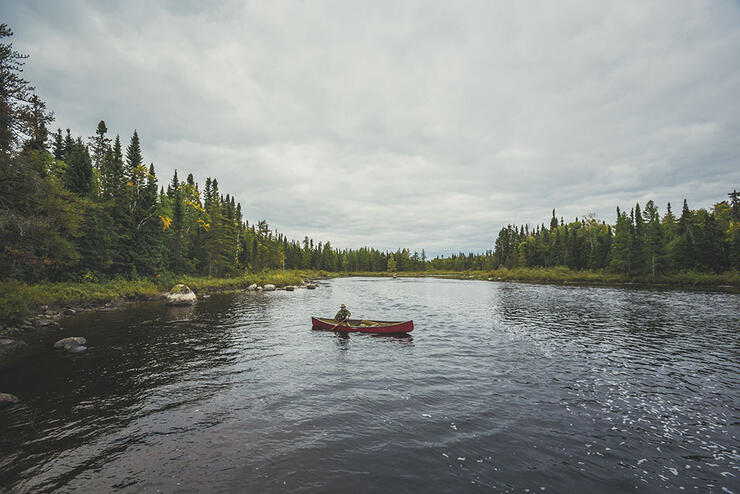
Brennan and Granite Lakes
These interconnected lakes on the Allanwater River are joined by several impressive waterfalls and rugged portages. You could charter a floatplane from Armstrong and spend days exploring diverse shorelines (Granite Lake is particularly gorgeous with many islands and steep, densely forested shores), or integrate these lakes as part of a longer Wabakimi canoe route (such as the Allanwater River).
Caribou Lake
Caribou Lake falls just outside the eastern boundary of Wabakimi Provincial Park, but it serves as the only entry point for paddlers who wish to access the backcountry by road. You have two options: Little Caribou Lake is a narrow, sheltered body of water that’s safer to navigate in windy conditions; and Caribou Lake is a much larger lake that allows for portage connections to Smoothrock Lake. Both are accessible by a gravel road leading west of Armstrong; contact a local outfitter for vehicle shuttles and secure long-term parking.
Flindt Lake
This lake is part of the Flindt River system, and provides access to dozens of other smaller lakes by way of portages. Like so many other Wabakimi lakes, Flindt Lake is renowned for its fishing for walleye and trophy pike.
Kayaking in Wabakimi
Wabakimi Provincial Park is beloved by canoeists–but its largest lakes are ideally suited for exploration by sea kayak. Charter a floatplane from Armstrong and sea kayak Wabakimi’s freshwater jewels, such as Wabakimi and Whitewater lakes. If you’re willing to carry your kayak on a few portages, it’s also possible to kayak into the Wabakimi backcountry starting at Caribou Lake, with only a few short portages to the sprawling waters of Smoothrock Lake.
Wabakimi Canoe Rentals and Outfitters
Armstrong-based Wabakimi Outfitters and EcoLodge is your best source for canoe rentals, route planning and outfitting. Owner Bruce Hyer has a long history in the area, having explored Wabakimi extensively before advocating for its expansion in the 1990s. Wabakimi Outfitters provides top-of-the-line lightweight canoes and backcountry gear, along with vehicle shuttles. They can help you set up VIA Rail train shuttles as well as make arrangements for floatplane dropoffs and pickups for fly-in routes throughout the area. What’s more, the company’s eight-room ecolodge on Mattice Lake is a great place to start or finish your trip. Guided Wabakimi canoe trips and Lake Nipigon kayak trips are also available. Wilderness Supply also offers canoe and kayak rental in nearby Thunder Bay, making this another option for self-sufficient paddlers with the ability to car-top their rental boat to Wabakimi.
Getting to Wabakimi Provincial Park
As remote as Wabakimi Provincial Park looks on the map, there are plenty of convenient ways to access the park depending on your time, budget and desired experience. Many Wabakimi paddlers plan a route to mix and match different forms of access and egress, such as train-in and drive-out or drive-in and fly-out.
Road Access
The cheapest and easiest option for a Wabakimi canoe trip is to start from Little Caribou Lake, located less than 10 gravelled kilometres west of Armstrong on Caribou Lake Road. You’ll want to book a shuttle with an outfitter like Wabakimi Outfitters or Mattice Lake Air to drop you off and securely store your vehicle while you are exploring the backcountry. A 40-km drive on Airport Road leading east from Armstong provides access to the Pikitigushi River, and connections to canoe routes on the east side of Wabakimi Provincial Park.
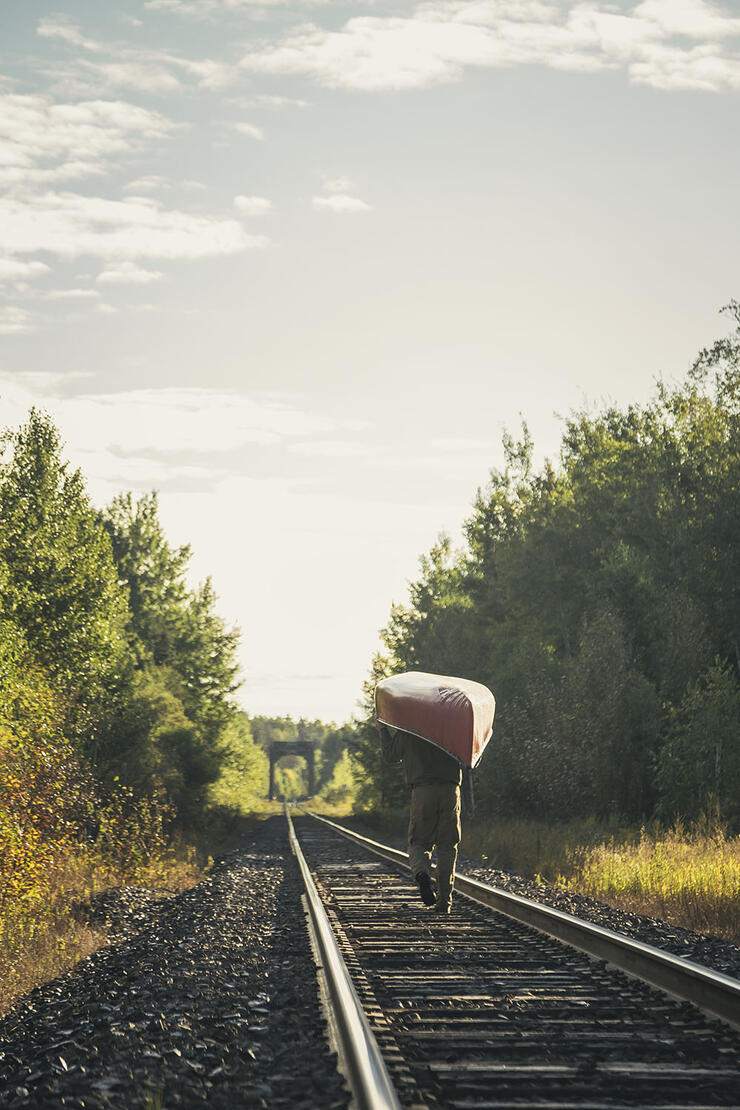
Train Access
There’s something special about loading your canoe and gear into a boxcar and accessing your canoe trip by rail. The VIA Rail passenger service passes through a small station in Armstrong and along the southern fringe of Wabakimi Provincial Park, as part of its route across Canada. Book your tickets online and work with a local outfitter to plan a route and securely park your vehicle while you’re away on a trip. You can also load your canoe and board the train in Toronto, Winnipeg, Sudbury or many other locations along VIA’s Canadian route. Remote pick-ups are also available; book your tickets in advance or simply flag down the train from a safe location on the railway siding. Popular drop-off and pick-up locations include Schultz’s Trail, Allanwater Bridge and Flindt Landing.
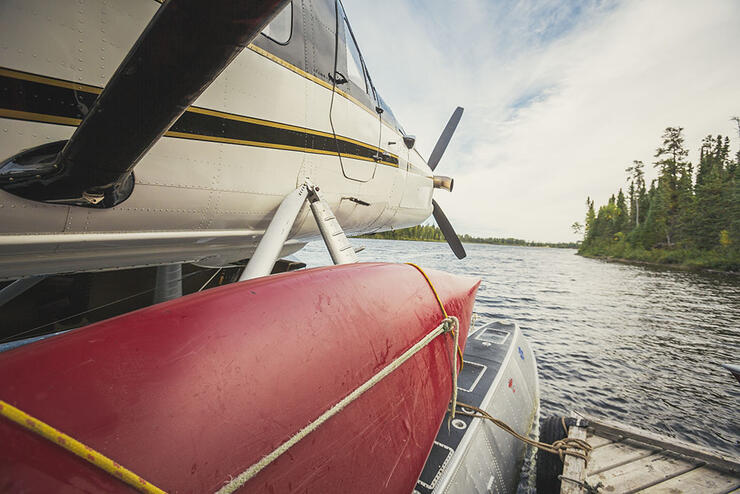

Floatplane Access
Armstrong’s Mattice Lake Air is your ticket for an amazing Wabakimi fly-in canoe trip. The company works closely with Wabakimi Outfitters to arrange for air service to and from the Wabakimi backcountry on board classic Canadian floatplanes, including deHavilland Beavers and Otters. You can also make arrangements to fly into a remote outpost camp owned by Mattice Lake Air or Wabakimi Outfitters for a cabin-based paddling adventure. Similarly, Wilderness North offers all-inclusive, fly-in paddling adventures based out of a comfortable lodge on Wabakimi’s remote Whitewater Lake.
Reservations
Park permits are required for backcountry camping in Wabakimi Provincial Park. You can make your booking at Ontario Parks’ online reservation system within two weeks of your departure date or by calling the park office at 807-473-3031. Permits can also be purchased from local outfitters.
Wabakimi Canoe Routes Maps
Ontario Parks has produced a handy Wabakimi Canoe Trip Planning Map that shows typical routes, portages and some campsites across the entire park. This is a great preliminary resource for planning a route and securing large-scale topographical maps for navigation while on the water. For more detail, check out the exhaustive canoe route maps compiled by the non-profit Friends of Wabakimi . This membership-based organization provides expert trip-planning advice for canoe expeditions across Wabakimi and the surrounding area.
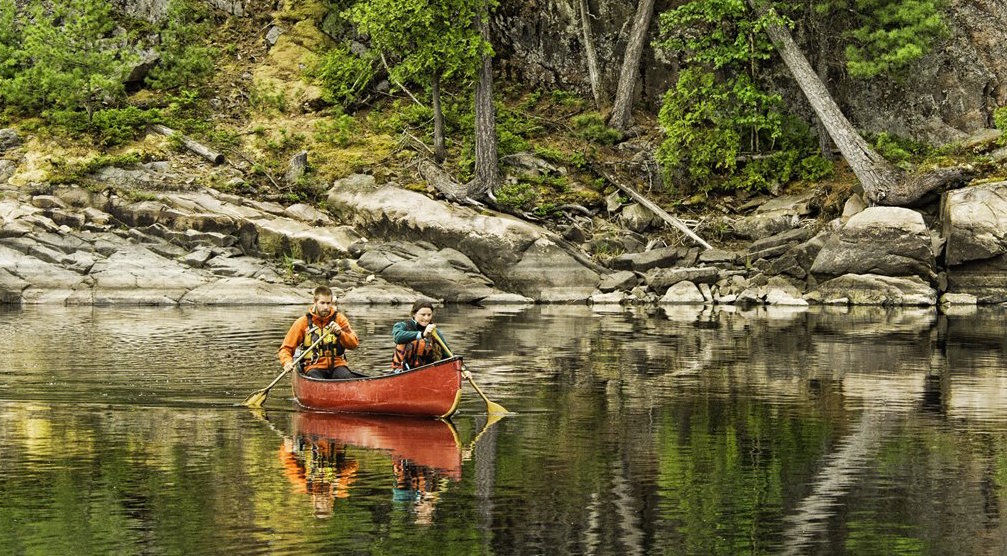
Find more Canoe and Kayak Trips
Showing 'edited body' is no longer supported..
Conor Mihell is an award-winning environmental and adventure travel writer based in Sault Ste. Marie. Read his work in the Globe and Mail, Explore, Cottage Life, Canoe & Kayak, ON Nature, and other magazines and newspapers. He's been a sea kayak guide on Lake Superior for close to 20 years, and has paddled from Sault Ste. Marie to Thunder Bay.
Recommended Articles
Ontario’s blue-water lakes, ontario’s moose hotspots, paddling laws, temagami canoe trip routes, best canoe maps in ontario, killarney canoe trips, best sites on the french river, easy river tripping, spectacular rivers, train-in adventure, it's time for a paddle, sun and sand, songs about canoeing, must-visit lakes in quetico, best family canoe trips, the steel river, supreme adventure, 9 best day trips by canoe and kayak, best kayaking on georgian bay, top 10 easy canoe trips.
Brightsand - Kashishibog - Kopka Rivers
Total distance: 209 kilometers from allanwater bridge to bukemiga lake , duration: 1 1 days (more might be required -- we had cooperative wind and weather), number of portages: 39 ( many can be avoided if running/ lining/wading rapids), total port. distance: 8.9 km, level of difficulty: advanced due to remote location , unpredictable weather, difficult river condit ions, and challenging portages.
*** Note: Unless otherwise stated, a ll maps shown on this page are provided courtesy of Toporama which contains information licensed under the Open Government Licence – Canada. I have made additional markings to show route information.***
In 2022, my father and I completed a 10-day trip through the Wabakimi wilderness and we were smitten. Despite the temperamental weather we had experienced, we had a fantastic trip and told ourselves we would return to the area.
Following the trip, winter descended upon us and my thoughts often returned to Wabakimi. Why not head up to the area again in 2023? Who says I can't go back two years in a row? I began some trip planning.
We had fun running a few rapids on the Lookout and Berg Rivers in 2022 and this time we wanted to see more of the area's rivers because the falls and rapids were simply breathtaking; Wabakimi is an Ojibway translation meaning “Whitewater”, after all.
So, after some research, we planned an ambitious route consisting of putting in at the Allanwater Bridge, heading north and having fun running the rapids of the Allanwater River to Brennan Lake, turning south through Granite Lake, hopefully making use of a long, little-used portage to get into Van Ness Lake, up the Lookout River system, crossing the tracks again to the south, and following the Aldridge Lake link to the Kopka. From there, we would run rapids down to the scenic climax of the route at the Seven Sisters Waterfalls. What could go wrong?
Well, Mother Nature and climate change had something to say about our plans. The spring of 2023 was abnormally hot and dry. The lack of moisture in the forest and vegetation basically allowed the Canadian wilderness to turn into a giant tinderbox from coast to coast. Smoke enveloped the entire eastern seaboard of the continent. To put it in perspective, the following graph taken from ( https://www.nytimes.com/interactive/2023/07/18/climate/canada-record-wildfires.html ) demonstrates how 2023 has far surpassed any previous year on record for forest fires. Incredibly, the record-smashing data for 2023 is based on the first half of the year only! At the time of writing this in August of 2023, the jury is still out as to the extent of the final devastation from the 2023 forest fire season.
One of those fires was on our planned route on the upper stretches of the Allanwater River and into Brennan Lake. SLK033 started on June 11th and as of August was still classified as "Not Under Control". The following image from the Ontario Forest Fire Info Map shows that over 62,000 hectares of the western part of Wabakimi Provincial Park had been burnt as of mid-August 2023. That is roughly the size of all of metropolitan Chicago, or approximately 155,000 football fields. Yikes.
( https://www.lioapplications.lrc.gov.on.ca/ForestFireInformationMap/index.html?viewer=FFIM.FFIM )
Needless to say, we had to change our planned route.
We decided to save the Allanwater River for another less-fiery time and travel up the Brightsand River, up the Kashishibog River, and cross over the height-of-land portage into Redsand Lake, which is at the headwaters of the Kopka River system. Heading upstream on the first two rivers is not nearly as fun as heading downstream, but taking this route would still allow us to see the Kopka and its incredible Seven Sisters Waterfalls, and have some whitewater fun when we got to the downstream part of the Kopka (...or so we thought! Incredibly low water levels had something to say about river running...but more on that on Day 7!) Besides, we already had our train tickets booked from Armstrong to the Allanwater Bridge, only we would be heading south from the bridge rather than north.
Well, after a long drive north from Peterborough, with an overnight stopover to visit family in Sudbury, we arrived in Armstrong in the evening. Our train was booked to leave Armstrong at 9:17 AM the following morning, and when we checked its progress online, it was actually running on time -- a rare occurrence, indeed!
(Image taken from Google Maps)
To Navigate to specific pages on this trip report, click on the links below:
Day 1 - Allanwater Bridge to Antler Lake (19 km)
Day 2 - Antler Lake to Harmon Lake (32 km)
Day 3 - Kashishibog River near Graham Road (19 km)
Day 4 - Kashishibog River after Graham Road to Kashishibog River west of Kashishibog Lake (16 km)
Day 5 - Kashishibog River west of Kashishibog Lake to Kopka River north of Siess Lake (21 km)
Day 6 - Kopka River north of Siess Lake to Uneven Lake (17 km)
Day 7 - Uneven Lake to Kopka River south of Aldridge Lake (20 km)
Day 8 - Kopka River south of Aldridge Lake to Kopka River at Unnamed Lake west of bridge - (17 km)
Day 9 - Kopka River at Unnamed Lake west of bridge to Kopka River west of Kenakskaniss Lake -(16 km)
Day 10 - Kopka River west of Kenakskaniss Lake to Kopka River at 6th Falls of the Seven Sisters -(13 km)
Day 11 - Kopka River at 6th Falls of the Seven Sisters to Bukemiga Lake (19 km)

THE TERRA INCOGNITA
Wabakimi Provincial Park – Kopka River
Date Completed: July 2017
Difficulty: Advanced due to distance, remoteness, difficult terrain and numerous rapids
Method of Travel: Canoe
Region/Location: Northwestern Ontario, Wabakimi Provincial Park; Kopka River Provincial Park
Trip Duration: Seven days
Distance: ~94km total (~86.5km on lake/river; ~7.5km over 30 portages)
Fees/Logistics: Park permit required within boundaries of Wabakimi Park; rail or float plane access required via Armstrong, Ontario
Trip Journal:
The magnificent, primeval ridges and valleys of Wabakimi were carved and scoured in the twilight of the last ice age, some 12,000 years ago. Black spruce, tamarack and jack pine, thin and stunted from long, harsh northern winters, cling to the shallow veneer of soil that scantly coats this portion of the Shield country. This harsh world still wholly belongs to the woodland caribou, the grey wolf and the bald eagle. Signs of humanity are sparse; few tread here. But if you endeavour to pass through this land, look carefully under the shadowy canopies of those weathered and stunted tamaracks; under the beard lichen and Labrador tea; amongst the sphagnum moss, wood ferns and wild blueberries bushes; you will find trails of another time. Gaze over the placid waters, down the tumbling rivers, across the serpentine lakes, and envision the water trails of yesteryear. These canoe routes were established over centuries by the North of Superior Ojibwe – ancestors of the Whitesand, Mishkeegogamang, Saugeen, and Eabametoong First Nations. Today those canoe paths remain.
Should you heed the call of Wabakimi’s mystical waterways, you will traverse broad swaths of an untouched wilderness paradise. Travel this land and you will know the feeling of untried adventure in the boreal; you will find glory in turbulent rapids and boundless solitude on cold and glassy waters. You will discover new pathways, opened and blazed not by the axe, but through reflection and quiet contemplation in nature.
Wabakimi is a place to feel the thunderous fury of great waterfalls through your bones, and gaze at distant lightning storms as all the stars of the galaxy flicker off the rippling dark waters at your feet.
May your days, here, be sunny; may your evenings shine with fiery, orange horizons; and may your nights be cold and dark, save the silent sirens of midnight in their purple and green splendour.
Acknowledgement:
I wish to acknowledge, in this write-up, the assistance provided to our group by the late Phil Cotton, former Director of the Wabakimi Project/Friends of Wabakimi. Phil answered my innumerable emails/inquiries regarding logistics of our planned route and provided sage advice on many aspects of our plan – including how to efficiently bag Wabakimi’s famous walleye. Thanks for helping us make this one of the most memorable trips we’ve completed, Phil.
Day 1 (July 19) – Union Station to Unnamed Lake (Mile Marker 32.3)
Distance Travelled: ~100m (no portages)
Our decision to paddle the Kopka River via the lake system north of Aldridge Lake had to do with the remoteness of south central Wabakimi Provincial Park and its accessibility by train.
A few months prior to setting out on our adventure down the Kopka, I had made arrangements with Via Rail to transport four paddlers, two canoes and gear from Union Station in Toronto to an unnamed lake North of Aldridge at mile marker 32.3 from Armstrong, Ontario (well before Allanwater Bridge). Our plan would be to paddle from this location south, through a series of boreal lakes, to the Kopka River and follow the Kopka system east to Bukemiga Lake where a shuttle driver would take us to Armstrong Station. From Armstrong we would board the train and head home.
It is notable that Via was extremely accommodating throughout the booking process and indicated that they were willing to drop passengers off anywhere along the trans-Canada rail line, so long as the request was made in advance. Our trip to Mile Marker 32.3 and return via Armstrong cost $354.82 (total roundtrip after tax) per person. We also incurred an additional $100 fee (each way) to transport each canoes.
The only other fees we incurred for the trip were camping permits for our first two nights at $15 per night (Wabakimi is an operating park, but Kopka River is not), a $160 shuttle fee to take us from Bukemiga Lake to Armstrong, and two rooms at the Chateau North motel at $100 each for our last night of the trip.
On July 19 th , 2017, our group of four – Jono, Lachlan Mike and I – arrived at Union Station with our gear and canoes and prepared to disembark. We learned beforehand that the passenger service along the line is regularly delayed being that precedence is given to freight traffic – it’s normal for passenger trains to be delayed several hours before departure and, in our case, our 10pm departure was postponed by five hours until 3am.
Once we had obtained our boarding passes and checked our baggage, we were instructed by Via personnel to load our boats onto the freight cars ourselves. Thus we began portaging our two canoes through the bowels of Union Station and up to the departure platform. This resulted in a comical situation, in which several dozen other waiting passengers rose to their feet and applauded our group loudly as we marched through the terminal with our boats. I guess you don’t see canoes being portaged through Canada’s busiest train station very often.
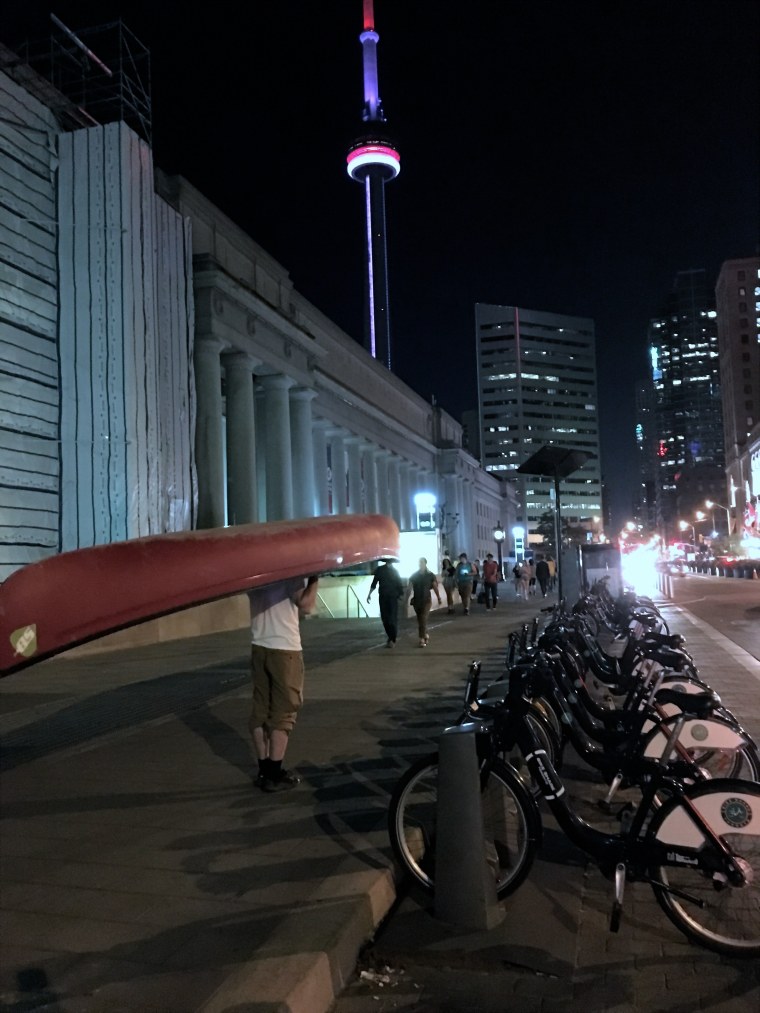
The train ride from Union Station to marker 32.3 past Armstrong was long and uneventful. The ride takes approximately 24 hours and included rest stops at Capriol and Hornepayne, where passengers can exit the train to stretch their legs.
On a few occasions throughout the train ride, Via staff conversed with us about our trip and confirmed our drop-off point to ensure that their documentation was correct and that they would not miss our stop.
At approximately 2am, a feeling nervous anticipation overcame our group; we were called to the freight car where we would soon unceremoniously extricate ourselves from the train and head into the wilderness. It didn’t help our nerves that one of the engineers in the boxcar suggested that, in his 10 years on the line, he had never seen a group request a drop off at this particular mile marker. Regardless, the train soon stopped at marker 32.3, just east of a large culvert and we began unloading our gear/canoes.
Suddenly we were thrust into the wild and before we realized it, our train had vanished into the distance. Note that westbound Via trains pass through this area only in dark, so it is important to have any necessary gear handy (such as headlamps) before exiting the train.
The track is set at least 20 feet above the unnamed lake to our south and it is necessary to negotiate a steep grade down to the water. To make things easier for ourselves we lowered our gear and the boats down to the water using ropes.
Once on the lake, we follow the shoreline west, past the culvert. After less than 5 minutes of paddling we came upon a good open campsite with room for several large tents – the site happened to be illuminated by hundreds of fireflies. This is where we set camp for the remainder of the night. The faint howling of wolves lulled us to sleep as the dawn began to creep over the horizon.
Day 2 (July 20) – Mile Marker 32.3 to Aldridge Lake
Distance Travelled: ~20km (including 1.5km over seven portages)
Upon rising, we ate breakfast, broke camp after 10am under fair skies and paddled to the west end of the unnamed lake where we traversed three short portages to reach Beagle Lake. On the day, we would traverse seven portages – all flat and easily negotiable.
It is worth noting, at this point, that in planning the trip weeks prior, I had also spoken directly with park staff about the condition of our route. The Kopka system, especially between our put in point and south to the river itself is seldom travelled. Fortunately, the rangers I had spoken with had informed me that a two-man crew had travelled along our precise route with a chainsaw early that spring (2017) – apparently their second time travelling the route in the prior ten years. This meant that the portages along the entirety of our trip were, for the most part, in immaculate shape.
It is important to beware that no portage trails or campsite locations on this route are blazed with plastic signs or trail tape; they are often difficult to find. The rangers that spring, however, had been nice enough to cut notches cut in waterside trees to help identify portage locations.
Beagle Lake is large and scenic, with beautiful, sheer 150’ granite cliffs at its north end. As we paddled along the base of the cliffs, two large bald eagles soared high above us.
The portage trail between Beagle and Laparde Lakes is intersected by an old logging road and camp. The road itself is badly overgrown by trees, but a number of relics – metal tools, cables and beams – have survived to this day. We also found evidence here of an old overgrown camp.
Past Laparde we entered Aldridge Lake – a large, windy, island encrusted body of water with multiple bays and arms. It was on Aldridge that we planned to camp.
In planning the trip, I had relied on maps and trip journals from WabakiMaps.com, Ontario Parks, Kevin Callan’s “Top 50 Canoe Routes of Ontario”, Albinger.me, and topographic data from the Federal government (at the time Volume V of the Wabakimi Project’s canoe route series had not yet been released). These sources provided more than enough information to easily plan and navigate the route, but for whatever reason, we struggled to find anything resembling a campsite on Aldridge.
After searching for about an hour, we thought we had finally found a suitable spot for tents on one of the lake’s central islands, only to discover that the clearing was a recently razed fly-in fishing outpost that had been burned to the ground. Little remained in tact amongst the ashy rubble of the lodge and the ground was not ideal for setting up tents. It would have been quite a horrific and spectacular site to witness the fire – the dense forest surrounding the heap of rubble was badly burned and blackened.
We departed the island and continued our search until finally, late in the day, we encountered a ministry boat cache on a small beach along the southwest shore of the lake. The cache was overgrown and clearly not used in recent times, but notwithstanding the dense cover of ferns and tangled saplings on the forest floor, there would be enough room for our tents. We got to work clearing the site and before long had erected a nice little camp, just before dusk. We built a fire on our little beach, ate dinner, fished (Lachlan even caught a pike) and sat in awe of the northern lights as the emerged in the ever-darkening sky; an incredible start to our trip.
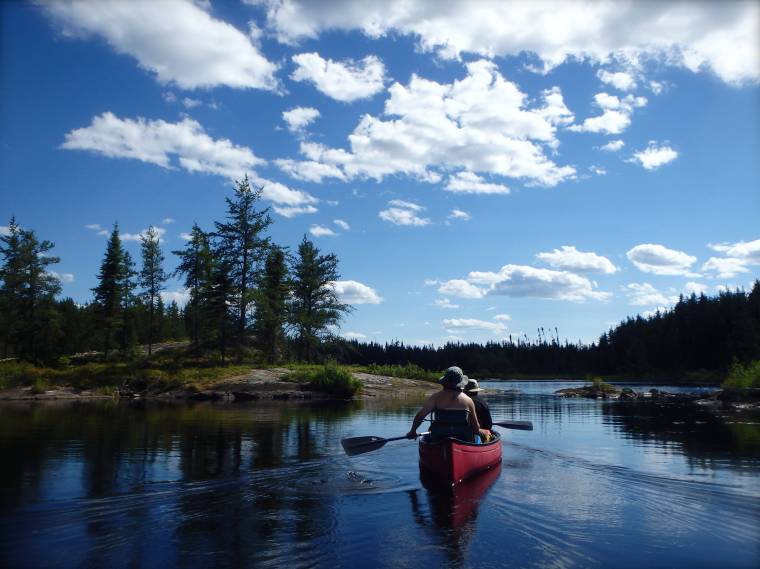
Day 3 (July 21) – Aldridge Lake to Sandison Lake
Distance Travelled: ~13km (including 2km over five portages)
The group woke up at around 9am to beautiful conditions and we took our time in preparing to set off. At around 11am we finally departed from our site to the south end of Aldridge Lake where we carried over a 75m portage. This portage would have been very difficult to spot had the rangers not blazed these trails with their chainsaws the month prior.
At the end of the next lake was a woody portage that gives way to an open section of rich, reedy marshland that stretches for over half a kilometre before the trail continues through a thick stand of conifers to the south. A cold, thin stream cuts through the marsh but is not navigable by canoe. Instead of paddling here, travellers are required to portage their boats and gear over this precarious section of peaty muck. In our case, we decided it would be easier to haul out laden boats using two people and painter lines, on either side of the stream, to the beginning of the next section of the trail. Going was very difficult and we repeatedly broke through the peat and found ourselves waist deep in mud.
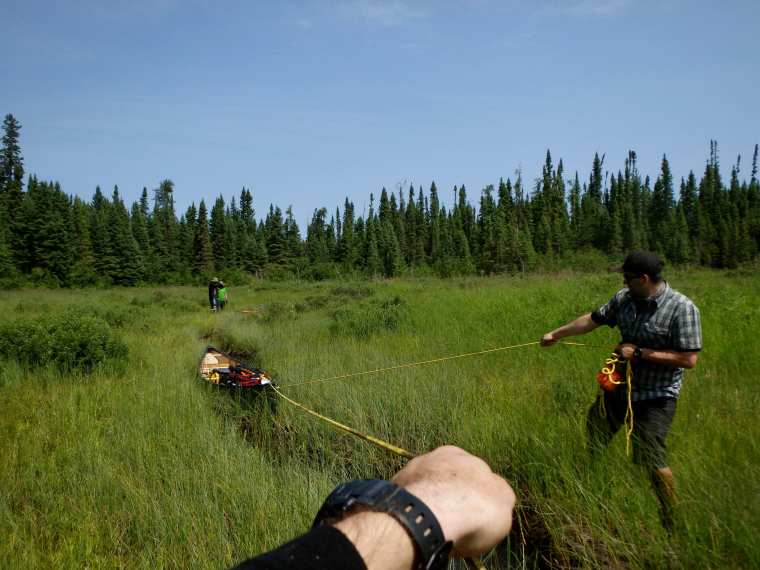
Thinking the worst was over, we began to portage our gear through the woods only to find that beaver activity had entirely flooded out the trail. Not even the work of the friendly chainsaw-wielding rangers that had passed through the area before us could salvage this disastrous portage, which was a mess of thick, dense trees, mud, roots and deadfall.
We rewarded ourselves for finally completing the portage with a leisurely lunch of pitas, cheese, sausage and whiskey, which we consumed on the dark waters of the last lake before the Kopka River.
Again, the kilometre-long trail to the Kopka was difficult to find, and was severely overgrown with Labrador Tea and bramble. Evidently, part of the trail had been recovering from a wildfire. In this middle section, it would have been quite easy for any one of us to wander off the trail without realizing it.
As we finally approached the river, we came upon two fellow paddlers sitting in a yellow canoe at the base of the trail. They identified themselves as Barry and John – volunteers, out of Wisconsin, with the Friends of Wabakimi and the Wabakimi Project – and were out on three-week trip to map the watershed east to Lake Nipigon. We had an interesting conversation with the duo about their route and the river, and have since kept in contact with Barry who is a kind fellow and a great champion of the wilderness.
We continued to paddle down the river and encountered our first rapids of the trip – a few easy CIs that we were careful to negotiate given the apparent low-level of the river.
The Kopka is dark, winding, bouldery, narrow and enclosed, shrouded by stunted spruce and pine, and the boreal forest here is as beautiful a place as I’ve seen. After an additional six or seven kilometres of travel on this magnificent river, we arrived at an open rocky site on the west shore of Sandison Lake.
We prepped the site by clearing a couple of dangerous pieces of hanging deadfall from old forest fires. Lachlan and Jono went off fishing and returned with a plump walleye, which we filleted and cooked to supplemented our freeze dried dinners.
The stars came out in vivid splendour as we sat by the campfire.
Day 4 (July 22) – Sandison Lake to Unnamed Bay on the Kopka River
Distance Travelled: ~15km (including ~450m over four portages)
I went to bed earlier than the others – at around midnight – and roused from sleep with the break of dawn. A pink, iridescent light illuminated the walls of my tent and I decided to step outside into the warm morning air to watch the sunrise unfurl. I made the right call – the sky was a panoramic spectrum of pastel pinks and oranges, capped by a light purple smattering of altocumulus clouds. I could sense that it would be another good day.
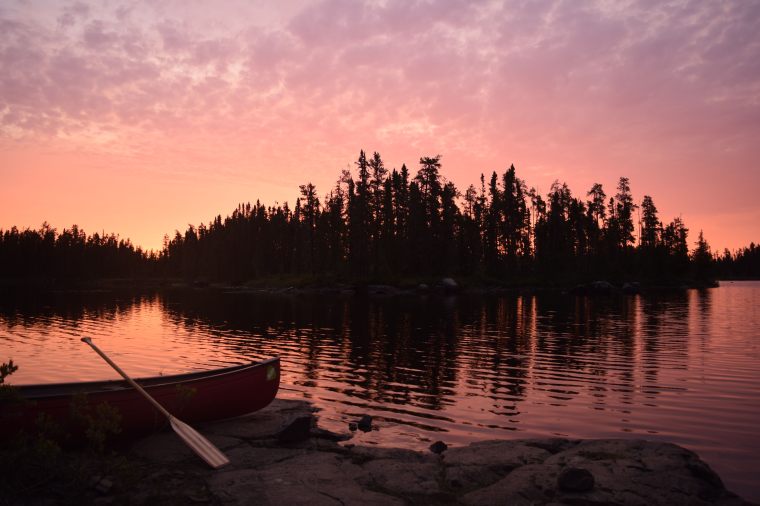
The morning began with the group coasting along the calm waters of north Sandison before hauling over two portages. The second portage – a 100m carry through the middle channel of the river – begins precariously close to the top of a falls.
The weather this morning had been so pleasant that we decided to hop in the water at the base of the falls and cool off. We spent a good deal of time here fishing too and Lachlan had the good fortune to bag another walleye and pike.
The remainder of the day was spent paddling stretches of picturesque flat water interspersed with exhilarating rapids up to level CII+.
Upon completing a set of four successive rapids at a narrowing in the river, approximately 8 km past Sandison, another large unnamed lake opened up. In exploring the lake, we discovered a small island with a fish cleaning table and an abundance of ripe blueberries. We stopped to snack, but soon noticed an unusual red piece of debris sitting along the south shore of the lake approximately 400m to our south. Lachlan and I paddled off to investigate and found that it was a wrecked canoe with a registration sticker from 2014 that indicated the boat belonged to the Ohio Watercraft Livery. The damage to the boat suggested that its paddlers must have wrapped it around a rock in one of the rapids up river – a chilling reminder of the power of this land. The boat, I guess, belongs to the wilderness now.
Our next obstacle, two kilometers to the northwest was another impressive tumbling waterfall. The 300m portage circumventing the falls was also intersected by another old logging road that devolved into a rugged ATV trail. A bridge extended across the river, following the road, and signs of recent human activity was apparent in the form of a bonfire pit and refuse. Beyond the falls we ran another Class II set and paddled onto another unnamed bay as clouds subverted the sky.
The day concluded at an incredible multi-levelled, medium-sized island campsite. The site, which was rocky and tree encrusted, was clearly underused and held an abundance of firewood. By this point, the sun had been entirely replaced by hazy monotone grey clouds and we experienced a light misting of rain for the first time in the trip. The rain quickly subsided and an opening in the clouds emerged to the east. Mike and I went out in the canoe and hooked a walleye before heading in to watch the sunset over the gloomy dark expanses of boreal beyond our island. We built a great campfire and went off to bed after midnight.
Day 5 (July 23) – Unnamed Bay on the Kopka River to Kenakskaniss Lake
Distance Travelled: ~18km (including 1.3km over seven portages)
We rose at 9am this morning and took off from camp around 11. Late mid-summer sundowns at this latitude in the north mean that is no need to get the day started early. We’ve been graced with another sunny day.
After an hour or so of paddling, we glimpsed a bear swim across the river in the distance. We continued to follow the river system east, encountering a number of falls requiring mandatory portages – all in excellent condition.
Half way down Hook Lake, through the forest on the northern edge of the water, an old dilapidated fishing lodge, consisting of a cabin and separate shower building, slowly appeared through the forest. A sign on a tree abutting the water identified the retreat as “Hook Lake Fly-in” – we decided to explore the area further.
The compound was badly overgrown with brush and the lodge itself was in particularly bad shape. However, despite gaping holes in the walls, and the rotting skeleton of the building, there was a surprising abundance of intriguing items in the cabin. The wall was adorned with a fishing log that seemed to indicate that the lodge was last used in 1997 (some groups reportedly caught up to 30 walleye/pike in a single day). The date of abandonment was corroborated by a few dusty magazines found on a nightstand. The building contained a kitchen, dinner table, old bunks, and a number of old useless artifacts, including cutlery, dinnerware, old fishing supplies and expired foodstuffs. Outside we found a large rusted chainsaw.
Back in the boat we cast off from shore and within two or three minutes spotted a massive bull moose eyeing us from a bog behind the compound. Further ahead, travelling close to the north shore of the next lake, a bald eagle fluttered into the sky leaving a large fish carcass on the rocks below.
We approached mid-Kenakskaniss Lake – an expansive 5.5 km lake shaped like a crooked finger – in the early evening and found a large open, granite site on the west shore. The site was excellent, with a large bouldery fire pit, and beautiful panoramic vantage. The site had clearly been overrun by wolves recently as there were a dozen or more large plots of dried wolf scat strewn about the area.
After erecting our tents, pulling together a large, hot fire, Lachlan and I each took a canoe out onto the open, placid lake and fished under the purple vapours of the late evening; to no avail this time. We soon turned in and beached the boats, and photographed a faint but beautiful aurora emerging in the North.
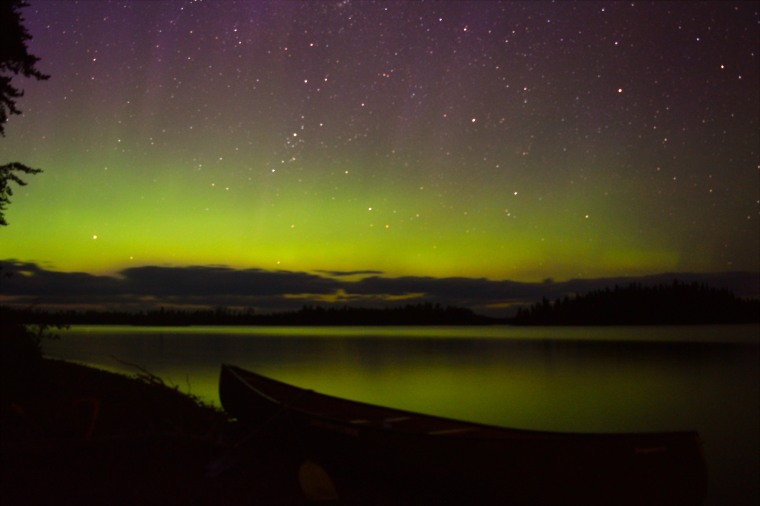
Today we travelled from 11:30-8:30pm and took plenty of time to intermittently fish and swim along the way.
Day 6 and 7 (July 24 and 25) – Kenakskaniss Lake to the Seven Sisters
Distance Travelled: ~8km (including 1.4km over four portages)
Today is our sixth day on the route. Our plan was to paddle approximately 8km to the “Seven Sisters” section and camp near one of the waterfalls. The Seven Sisters area is a collection of powerful, breathtaking waterfalls that is, without exception, the highlight of any trip down the Kopka River.
Knowing we had a relatively light day in travel distance, we again took our time setting off and launched the boats around noon. We were fortunate to have fair skies and equally fair winds once again that pushed us down Kenakskaniss Lake and around the corner to the river.
Before reaching the first portage of the Seven Sisters we were forced, due to the water level, to paddle and haul through bouldery patches of river rock – which may be extremely treacherous to those who let their guard down.
Though relatively flat, a large portion of this 700m trail winds through a precarious field of glacial cobblestone that requires utmost care to navigate. While waiting for the others at the end of the portage, I pulled out my rod and caught another walleye almost instantly. Fishing at the base of the innumerable falls and rapids in the Wabakimi area had been tremendously fruitful for us.
Just after pulling out a fish, I noticed that two green canoes slowly edging their way toward me at the base of the portage trail – we had not anticipated that we would see other groups in the area. Each boat was operated by a fellow of no more than 25 years of age and they seemed to be in no hurry. We learned, in speaking with them, that they were Keewaydin guides leading a party of 10 young teens up the Kopka River on a 28-day canoe trip ending at Allanwater Bridge.
As a youth, I had never participated in any backcountry canoeing/wilderness camps and had never previously encountered a camp this far into the backcountry. And so it was to my complete shock and amazement to learn, after reaching the next portage and speaking with some of the campers, that they were hauling 100lbs cedar canvas canoes and large wannigans up river through this rugged country. Considering some of the lads in the group looked to be hardly 100lbs in weight themselves, this feat was pretty incredible. We wished the boys well, encouraged them to always find time to paddle their canoes as long as they live, and went on our way to scope out the impressive and deadly set of falls to our north, before heading down the extremely steep, 400m portage trail (take your time here).
At the end of this trail we entered a shallow pool and carefully ferried our canoes into a large bay to watch this spectacular section of the Seven Sisters up close. Be wary that an error in ferrying across the current here could result in being swept over a small waterfall to the east.
The falls here are something to behold. It is very difficult to justify the supreme majesty of the Kopka River and especially in this incredible section of massive cascading waterfalls and cataracts. At times, here, it is easy to feel wholly insignificant. The rugged rolling, pine studded hills and canyons of the boreal and the big waters that flow through them will make you feel small, vulnerable and uneasy, but make no mistake, they are as alluring and enchanting as they are humbling. I have not yet met a person who has travelled this part of the country who does not long to return. Such is the spellbinding grip of Wabakimi.
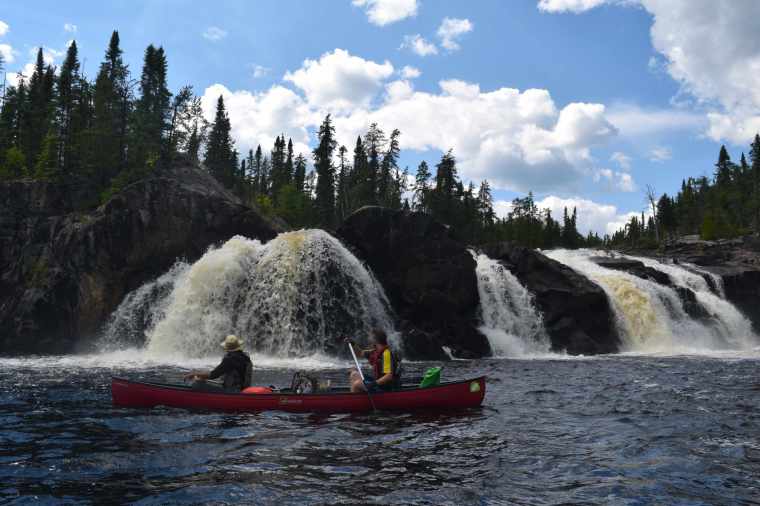
Beyond another 200m portage and by 4pm, we were at our campsite – the only site on the shores of a spacious, open pool of dark, pristine water that acts as an intermediary between two additional massive waterfalls. This pool was shrouded on all sides by cliffs of 100 and 200 feet (or more). The site was open and flat, excellent for swimming and fishing, and the vista offered at this location would be hard to parallel anywhere. This place was a veritable eden. We decided quite quickly, given the excellent weather we had had all trip, that we would use our rest day here.
For the remainder of the day, we swam and fished, and watched a beaver swim in the cool waters before us. At dusk we climbed a nearby peak and, amongst birdsong, a slight breeze in the trees, and a faint rumble from the rushing falls in the distance, marvelled at this earthly paradise, from its dizzying heights.
Our rest day offered an opportunity to more thoroughly climb and explore the massive cliffs surrounding the area. After breakfast, we paddled to three locations and, again, revelled in the grandness of this place. Atop one of the peaks, we found hundreds of ripe blueberry plants with fruit edible by the handful. Atop another we gained an excellent view of the dramatic chute we had portaged around the day before – a long narrow tumultuous falls that was so powerful it could break a tree in half.
This was a day where we swam and fished, and soaked in the midsummer sun. Mike made a pirates mast/flagpole for one of our canoes and slowly paddled it around the corner to where Lachlan and I were fishing – we all laughed hardily. I wore out the day reading my book – Don Starkell’s Paddle to the Arctic – by a late day campfire.
As dusk crept in, so did a strong wind. Clouds swirled and the barometric pressure dropped rapidly. Big, heavy drops of rain started to fall like rocks from the sky. We collectively agreed that, after over a week of impeccable weather, we were due for a large storm. Instead, though, continuing our string of good fortune, we were treated to an incredible show in the sky.
With the rain at bay, and the stars emerging, we watched clouds rapidly sweep across the northern sky in an easterly bearing. The crash of distant thunder could be heard beyond the ridges of our little lake, but the sky above us remained clear and full of twinkling stars. Intense flashes of lightning illuminated the metamorphosing clouds on the dark horizon every two or three seconds. It appeared as though this intense, raging electrical storm would miss our camp by no more than 3 or 4km.
Day 8 (July 26) – the Seven Sisters to Wigwasin Lake
Distance Travelled: ~12km (including 350m over two portage)
My eighth day journal begins with the following words: “Sometimes the Gods bless you. We’ve had some tough trips over the years, but this time we’ve had eight straight days of perfect weather, scenery, cliffs, waterfalls, cascades, swimming, fishing, no bugs; we’ve had hard portages and slogged through marshland; but we’ve had the northern lights, passing electrical storms, wildlife, forgotten and derelict cabins with relics of ages past, sunsets, blueberries by the handful, summer days… this place is like heaven.”
At around 9:30am, as we were packing up our tents and gear and getting ready to hit the water, Barry and John from the Wabakimi Project caught up to us and pulled up to our site. We stuck around and shot the breeze with them on camping and canoeing, conservation, politics and life in general. We even took the opportunity to snap a group picture, before exchanging pleasant wishes and heading on our way (they decided to stay back at the site we had occupied for two days).
Across the pool, we came to the last and perhaps most famous, of the Seven Sisters. While this final waterfall, like the others, is spectacular, this section is probably best known for the ridiculously steep portage that bypasses the falls on river left. This 150m trail, known as the Mountain Goat Portage, requires travelers to lower their boats and gear down a sheer cliff using ropes and carabiners. Note that there is a more moderate alternative trail on river right for those who wish to forgo the dizzying challenges of the Mountain Goat.
On this day, though, we were up to the challenge and hauled our boats and gear down the first section of the trail to the lip of the drop. At the time we ran the route, there were a few old tethers and climbing ropes already fixed in place to assist in lowering gear and to help canoeists climb up and down the cliff as necessary. However, it would wise for any group interested in trying this portage, to bring their own ropes in the event that pre-existing lines have been removed or are too weak to support gear. Ultimately, while conquering the Mountain Goat was a novel accomplishment, having four strong men in place to carefully handle the load made the task relatively straightforward.
At the bottom of the Mountain Goat, we hit another CI rapid, left the Seven Sisters behind and began the final leg of our journey.
Tailwinds pushed us along the 5km long lake that follows the Seven Sisters and we ran a quick series of CIs before entering Wigwasin – a broad lake that includes an open 1.6km crossing. By the time we reached Wigwasin the wind had increased dramatically and large whitecaps had appeared at our back. We opted to attempt the crossing and made incredible time as the lake forced us along. At the end of the crossing, however, at the portage trail between Wigwasin and Bukemiga, we agreed that it was good to be off the water; had the winds been any highern we would have certainly risked a capsize.
Our final campsite of the trip abutted the portage trail between Wigwasin and Bukemiga. The site, which included a large boat cache, was well used by locals as a launching point for fishing on Wigwasin and beyond. As a result, the site is spacious and contains an assortment of lawn chairs, tables, gas cans and other debris. Still, the spot was good enough for us, especially being that the fishing was fantastic at the east end of the portage (where rapids wash into Bukemiga).
As we were preparing dinner on this, our last official night on the water trail, the high winds of the day exhausted at last and a beautiful golden sunset appeared off the beach and over the distant trees to the west. In the dying climax of sundown, Mike and I jumped into separate canoes and solo paddled our boats to the centre of the massive lake where we enjoyed the ethereal vapours of this purple dreamlike dusk.
Tomorrow we would wake early and finish the last few kilometres of Bukemiga and meet our outfitter for a ride at 2pm. Armstrong was our destination for tomorrow night.
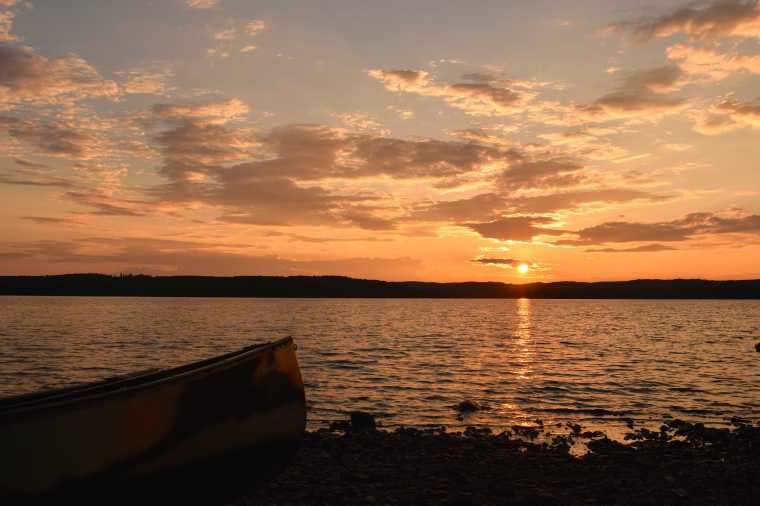
Day 9 (July 27) – Wigwasin Lake to the Bukemiga Lake Access Point (Take Out)
Distance Travelled: ~8km (including 440m over one portage)
We awoke at 8am and started packing our gear. Our goal this morning was to leave early, hopefully mitigating potential big winds and waves on Bukemiga, and finally finish our route.
Today was another spectacular day in the north. The waters turned out to be glassy and the skies clear. We paddled the last stretches of the trip at a leisurely pace, perhaps subconsciously hoping it wouldn’t end. We finally arrived at our take out point on Bukemiga over an hour ahead of our prearranged shuttle.
Collectively, we were tired but ecstatic, this had been one of the greatest trips of our lives and offered us all of the very best elements of wilderness adventure – challenging distances, remoteness, hardship, but incredible scenery, conditions and solitude. We celebrated on the shores of Bukemiga with a swim while we waited for the shuttle.
Shortly after our designated pick-up time, we realized that something was awry and feared that our outfitter had forgotten us.
About four weeks before embarking on our trip I had called Mattice Lake Outfitters out of Armstrong and had spoken to the owner, who confirmed with us that he would have a shuttle waiting at the end of the Bukemiga Lake Access Road when we arrived at 2pm.
Our attempts to call the outfitter failed as cellular service was not available over most of the Highway 527 corridor. We waited at the pick up point until around 3pm and decided to make the 700m hike out to highway 527 to see if we could spot any signs of our outfitter, to no avail.
The Bukemiga Lake access road is about 20km from the outfitter’s office and even further from town. With the day fading fast, we decided that our only real option was to hitchhike to the outfitter. Mike and I decided to give it a shot and were quickly picked up by a pleasant couple from the Whitesand First Nation who agreed to drive us directly to Mattice Lake Outfitters. We chatted about the town of Armstrong, local industry (mining and, in the past, logging) and good fishing spots en route.
Upon arriving at the Outfitters we were shocked to learn that our shuttle booking was never logged/recorded, despite the fact that I had clearly arranged, confirmed and recorded a pickup time, date and location. No apology was made to us and the staff went so far as to blame me for not “following up”. I also later learned that they had overcharged my credit card. Unfortunately, my subsequent calls to the owner went unanswered and unreturned.
Ultimately, the outfitter did agree to retrieve our friends and our gear from the take out, and drove us all to the Chateau North Motel in Armstrong.
Armstrong – also known as Armstrong Station – is a dusty town of 200 residents, 250km north of Thunderbay. It is adjacent to the Whitesand First Nation – an Ojibwa reserve of about 300 on-reserve residents, which had resettled along the rail line from the north shore of Lake Nipigon in the 1940s.
In addition to its train station and motel, the town of Armstrong has two restaurants a general store and a small gas station. The town is a departure point for canoeing, fishing and hunting expeditions in the Wabakimi area.
Anxious to move on from the frustrating end to our trip, we dropped our gear off in our rooms (the rooms were sufficiently large to hold our canoes as well), cleaned ourselves up, and walked over to one of the restaurants to celebrate with food and beer.
Back at the motel we encountered a friendly crew of construction workers from Thunder Bay that were relaxing outside of their rooms after a long day of road maintenance in the town. We shared drinks and had a hearty discussion with them and they recommended that we check out the abandoned military installation 2km east of the town before nightfall. We took heed of their recommendation and left in a hurry.
The installation they were referring to is the old Armstrong Canadian Forces Station that was initially opened during the Second World War, in 1942, to house American air defence units tasked with protecting the Soo Locks.
Following World War II – in the early 1950s – the site was reopened as one of the United States Air Force radar stations that comprised the Pinetree Line of Ground-Control Intercept radar sites, spread across the northern part of the continent. The site’s primary purpose at this point was to identify and help intercept Soviet aircraft during the Cold War. In 1974, the site was shuttered due to advances in radar technology, and for a time was partially revived as a community hub, before being fully abandoned in 1993.
The collection of old, dilapidated buildings here – residential units, stores, a mechanics garage, a school, the radar installation itself – are incredible to explore. This place is the epitome of a ghost town; walking the streets here one can not help but feel as though they have survived some sort of apocalyptic event.
After exploring the buildings, with night creeping in ever more intensely, we decided to hike back to our motel and get some rest as our train back to Toronto would be coming the next day.
In the morning, anticipating correctly that our train would be delayed by several hours, we resolved to explore the abandoned town for a couple of additional hours under the light of the sun.
At around 11am we checked out of the motel, grabbed lunch and walked over to the train tracks to wait out the arrival of our ride home. To kill time, we talked to a number of the locals and reminisced over the adventure that was now coming to a close.And what a great adventure it was. Over the years, our group of friends, with the aim of creating good memories, have traversed some of the finest swaths of untouched wilderness in Ontario. Of them all – of all our adventures in the wildlands of the north – it would be hard find a place that embraced us, enamoured us and took pieces of our hearts, quite like the rugged woodlands of south Wabakimi.
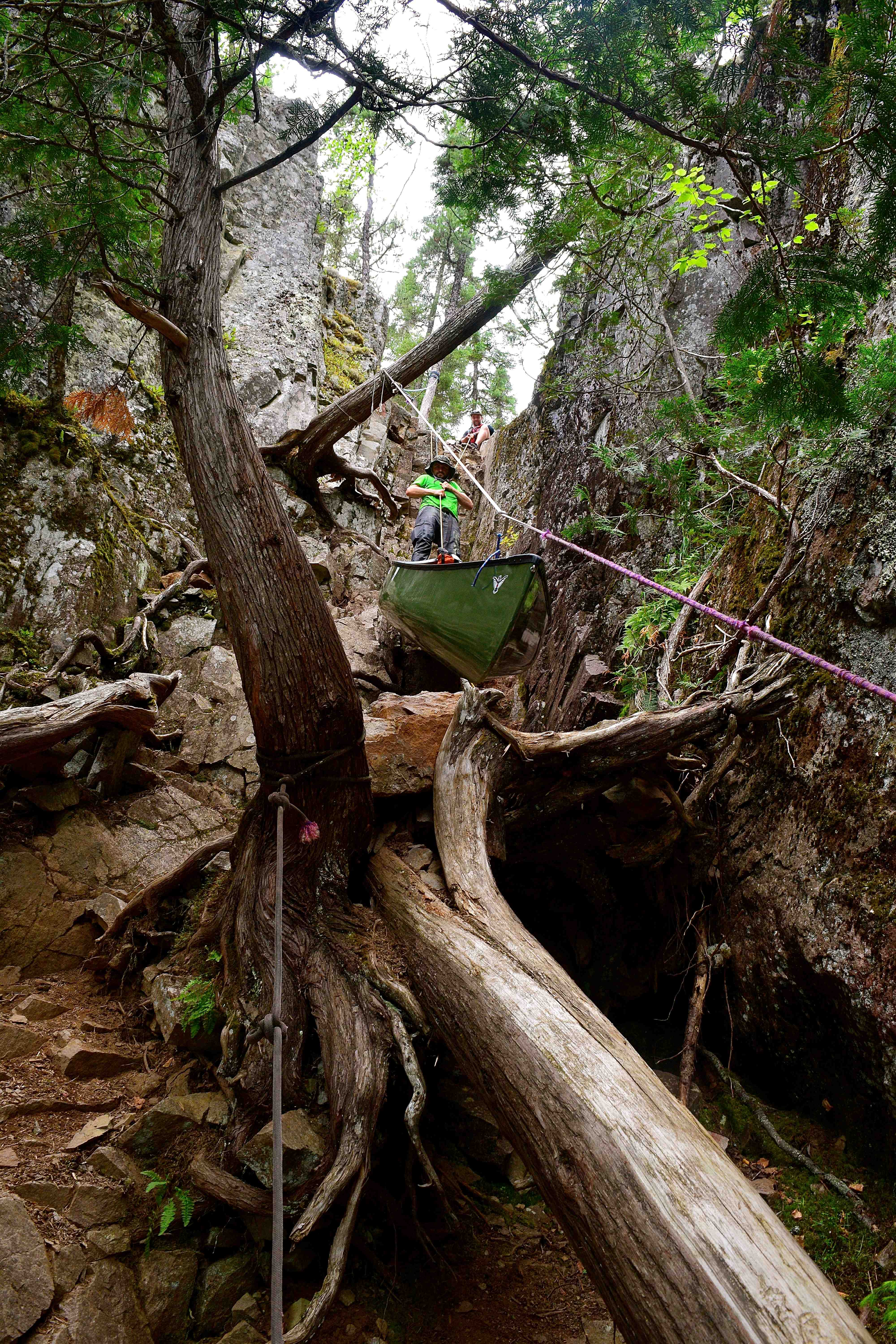
Share this:
Leave a comment cancel reply.

- Already have a WordPress.com account? Log in now.
- Subscribe Subscribed
- Copy shortlink
- Report this content
- View post in Reader
- Manage subscriptions
- Collapse this bar

CLIFF JACOBSON
Outdoor Writer & Consultant - Wilderness Guide - Custom Canoe Expeditions into the far north
- Aug 7, 2021
NINE ADVENTUROUS--BUT NOT DEATH-DEFYING CANOE TRIPS!
Updated: Aug 9, 2021
Cliff Jacobson

Rio Grande River, Texas/Mexico border. Scenes like this are commonplace along the RioG.
That's my canoe in the foreground.
When someone asks me to share my favorite places to canoe, I usually hesitate. After all, one person’s treasure is another’s trash. I like my rivers brimming with wildlife and rapids. And the more remote, the better. But not every paddler shares my love of adventure. Most prefer quiet, easy routes without death-defying rapids and curious bears. So, as a nod to them, I offer these beginner/intermediate level routes which are adventurous but seldom death-defying. Naturally, high water, low water or no water can change the difficulty. The routes are arranged in order and rated from the easiest (1) to the hardest (in this case, 8). For comparison, these rivers would rate a 10: Hood, Burnside, Coppermine and Mountain (Nunavut, Canada).

Buffalo River, Arkansas. There are many caves like this along Ozark rivers.
1. Buffalo River, Arkansas : Picture the river in the film “Deliverance” and eliminate all rapids that rate above low Class II (advanced beginner). Add beautiful sandy beaches, spectacular vistas and free-roaming elk. The Buffalo is a federally protected river and one of the few U.S. rivers that allow you to camp and build fires (no fire-pan required) anywhere. There is no development along the route, which will be enjoyed by all skill levels. Canoe rentals are available. You must do this river in early spring if you want enough water to canoe the upper part near Ponca—which is the most adventurous section. Cliff’s rating: 1

Upper Frost River, BWCA, Minnesota
2. The Frost River, Boundary Waters Canoe Area : The Frost River flows out of Frost Lake, which is accessed off the Gunflint Trail. If you follow the main river (my book, “Boundary Waters Canoe Camping” defines the route), and take only essential portages, you’ll enjoy a very remote and satisfying experience. The river flows into Little Saganaga Lake. From there, you can circle east and south back to Round Lake and your awaiting car. The river is narrow and shrouded by bluffs—well protected from wind and ideal for solo canoes. There are some small rapids that may be canoeable. Portages are rigorous but short. Of all the trips I’ve done in the BWCA, the Frost is by far, my favorite. Important! You must do the Frost early in the season when the water is high. Go in low water only if you like to walk. Downside: There are A LOT (around 50!) portages. Most are very short. Cliff’s rating: 2

There are dozens of beaver dams along the Frost River. Fortunately, you are going "with the flow."

Upper Steel River, Ontario
3. The Steel River is located in northern Ontario, about 15 miles from Terrace Bay. It empties into the north Shore of Lake Superior. I first paddled the river in 1974, with three friends. We had home-built wood-strip solo canoes with two-piece nylon spray covers. The trip is described in my book, “ CANOEING WILD RIVERS, 5th Edition .” There’s a perfect mix of large and small lakes and meandering streams and rapids—and they can all be safely paddled in small solo cruising canoes. Most Canadian rivers are too big and powerful for the little solo canoes I love to paddle. The Steel is “just right.” You can do the river as a circle route (Santoy Lake to Santoy Lake) or end at the bridge that spans the Deadhorse road—about 30 miles above the Santoy take-out (recommended). Once, I canoed it down to Lake Superior (not recommended!). A car shuttle can be arranged in Terrace Bay. Be aware that some of the portages are killers—notably the first one from Santoy to Diablo Lake. A lightweight canoe is a MUST! None of the rapids rate over Class II, though some are fairly long. If you love solo canoeing, the Steel will challenge but not overwhelm. A “Steel River Circle Route” trip guide is available from the Ministry of Natural Resources in Terrace Bay. Cliff’s rating: 3

Manitou Falls, Fond du Lac River, Saskatchewan. From above, it looks like the river disappears into a hole in the ground. It's quite spectacular!
4. The Fond du Lac River is located in the northwest corner of Saskatchewan, just below the Northwest Territories. The draw is trophy fishing, spectacular campsites—many of which are on sandy eskers that run for miles—easy to moderate rapids and few portages, and no other canoeists. The country is fairly open so you can hike for miles without getting stopped by thick forest. Charter float plane in and out. Northern Saskatchewan rivers are noted for their generally light rainfall and minimal bugs. And the water is warm enough for swimming—or for safety if you capsize. Paddlers should be competent in (long stretches) of class II rapids. As northern Canadian rivers go, the Fond du Lac would be ranked as “easy.” It is a great “starter route” for those who want to experience the flavor of the far north. Cliff’s rating: 5
5. Cree River, Saskatchewan . Located just below the Fond du Lac, the Cree offers similar scenery and phenomenal fishing. The Cree is basically “all river”—only a few scattered ponds provide a flatwater experience. The big plus is that there are no portages. Not one! Scenically though, it's a step below the Fond du Lac. Rapids rate from riffles through Class II. Some continue for more than a mile! Spraycovers aren’t needed; it’s generally easy canoeing, but you must have basic whitewater skills. Like the Fond du Lac, the Cree is easy. Begin at Cree Lake (headwaters of the Cree). End at Wapita Lake or Black Lake. Charter float plane in and out. Very few paddlers do the Cree. Cliff’s rating: 5

Bears are common along the Fond du Lac and Cree Rivers. Be prepared! A campsite along the Fond du Lac.

Upper Rio Grande River, just beyond Lajitas. Cliff paddling Bell Wildfire canoe.
6. The Rio Grande River, Texas is not at all like the pictures of it you’ve seen in western movies. The river flows through the Chisos mountains in Big Bend National Park. Huge hills and deep canyons abound. It is essentially a mountain river with a fast flow. Camping and open fires (a fire-pan is required) are permitted everywhere. There are a lot of rapids on the Rio Grande, some are huge and/or impossibly cluttered and require a portage! Best go in October - February when the water is low/medium and the whitewater is manageable in open canoes. Six hundred CFS is about ideal for a scratch-free trip. We've done it as low as 200 CFS (very scratchy) and as high as 2000 CFS (dangerous!). Gauge readings, are available on the web. Note: the river rises quickly after a rain or when there's a dam release on the Mexican side. You can drive to the put-in and take-out or use a shuttle (on the Web) from Lajitas, Texas. Nix worries about Mexican bandits; electronic American eyes are on patrol! Cliff’s rating: (upper river, Lajitas to Rio Grande Village/suitable for solo canoes--5; lower river through the canyons/high-volume canoes or inflatables best: 6.5

Mariscal Canyon, Rio Grande River.

Typical campsite on a gravel bar along the Noatak River, Alaska
7. Noatak River, Alaska . Here’s a remote river for those with limited whitewater skills. Expect spectacular scenery, easily canoeable rapids and no portages. You're likely to see caribou, muskox, grizzlies, wolves and more. Fishing is excellent. Access and egress is by charter airplane from Beetles or Cold Foot, Alaska. Pilots won’t carry hard-shelled canoes on the pontoons of their airplanes so you’ll need a folding or inflatable canoe or raft. The Noatak is well above the Arctic Circle so the weather can be dicey. High water changes this ordinarily easy river into one that will earn your respect. Plan accordingly! If you paddle the lower river to Noatak Village when the salmon are running, encounters with grizzlies are common. You would be wise to bring a gun. Cliff’s rating: 6

Kopka River, just below "The Land of the Lost."
8. The Kopka River is located about 100 miles north of Thunder Bay, Ontario. Access by float plane (15 minute flight); egress by car. The draw is the spectacular scenery and magnificent waterfalls (11 of them!) which are more characteristic of Alberta than Ontario. The Kopka is small and narrow, with excellent campsites and fishing. Beginning paddlers should be accompanied by an experienced guide. Rapids usually rate Class II or less. Portages are infrequent and not too difficult, but they are very interesting and a few are hard to find. You can't just unwittingly barrel down this river and choreograph from the top what lies ahead. There are several spots where doing so will be disastrous. One "interesting" portage requires you to drop your canoe 75 feet down a broken cliff face on a mountaineering rope. A new rope was installed in 2013. Bring lines for each end of the canoe and a few carabiners. The lower Kopka terminates in a place my wife Susie calls “The Land of the Lost” which is one of the most beautiful, awe-inspiring places within the tree line. I’ve canoed the Kopka eight times—it is one of my favorite rivers. Paddlers should be capable in technical Class II rapids. Portages aren’t marked or maintained. You must know how to read the river! Cliff’s rating: 7

Interesting portage along the Kopka River. Here, you must drop your canoe about 75 feet down a cliff!

North Knife River. The fishing is spectacular!
9. If you’ve ever wanted to canoe to Hudson Bay (what paddler hasn’t?) the North Knife River (Manitoba) is the one to do. Begin your trip on North Knife Lake 160 miles from the Bay. From the river’s mouth, arrange boat or air transportation to Churchill, 35 miles away. Warning : Canoeing Hudson Bay to Churchill (about 35 miles) is very dangerous due to ice cold water, tides and wandering polar bears! Don't do it! Expect trophy fishing and polar bear sightings (!). Bring a satellite phone and a gun! Highly experienced paddlers only. Access is by float plane from Thompson, Manitoba; egress by train from Churchill. The North Knife is the toughest of the rivers on this list. Paddlers must be capable in Class II+ rapids and be undaunted by bugs and bad weather. It is one of my all time favorite canoe routes. Cliff’s rating: 8

Mouth of North Knife River on Hudson Bay. Waiting for a chartered boat pick-up. Note that the tide is out. You can arrange a boat pick up here or paddle (about 6 miles/90 minute paddle along the coast) to Dymond Lake Lodge where there is a pond that's large enough to land a float plane. You can charter a plane and fly to Churchill (10 minutes), thereby avoiding the boat ride on the Bay. Be sure you have a tide table!
----------------------------------
*My flagship book, CANOEING WILD RIVERS, 5th Edition , contains a wealth of advice on "how to safely canoe difficult rivers."
*My teen book, JUSTIN CODY'S RACE TO SURVIVAL mixes a fictional wilderness survival tale with practical outdoor tips everyone should know--a first for books of this type. Adults love it too!
My book, BOUNDARY WATERS CANOE CAMPING, 3rd Edition, details everything you need to know to safely and enjoyably canoe the BWCA.
Recent Posts
KAYAK OR CANOE--WHICH IS BEST FOR YOU?
Tu ON THE RIO GRANDE
CRISIS ON THE RIO GRANDE
1 comentário
Hi Cliff, this was a lovely read. Friends just back from the Porcupine R Sask. Wonder if you've done that one. Off to the Dumoine R tomorrow. travelling with new hernia. I won't be flipping the ABS this time around. I better get to the Cree R before I hit 70 I reckon. bob
Kopka River Provincial Park
Not available
General Information
Regional Health Unit for this Park: Thunder Bay District Health Unit
(807) 475-1634
Size: 31205.00 ha
Year established: 1989
Park Classification: Waterway
Kopka River Provincial Park Suite 221d, 435 James St. Thunder Bay, ON P7E 6S8
Trains Moscow to Elektrostal: Times, Prices and Tickets
- Train Times
- Seasonality
- Accommodations
Moscow to Elektrostal by train
The journey from Moscow to Elektrostal by train is 32.44 mi and takes 2 hr 7 min. There are 71 connections per day, with the first departure at 12:15 AM and the last at 11:46 PM. It is possible to travel from Moscow to Elektrostal by train for as little as or as much as . The best price for this journey is .
Get from Moscow to Elektrostal with Virail
Virail's search tool will provide you with the options you need when you want to go from Moscow to Elektrostal. All you need to do is enter the dates of your planned journey, and let us take care of everything else. Our engine does the hard work, searching through thousands of routes offered by our trusted travel partners to show you options for traveling by train, bus, plane, or carpool. You can filter the results to suit your needs. There are a number of filtering options, including price, one-way or round trip, departure or arrival time, duration of journey, or number of connections. Soon you'll find the best choice for your journey. When you're ready, Virail will transfer you to the provider's website to complete the booking. No matter where you're going, get there with Virail.
How can I find the cheapest train tickets to get from Moscow to Elektrostal?
Prices will vary when you travel from Moscow to Elektrostal. On average, though, you'll pay about for a train ticket. You can find train tickets for prices as low as , but it may require some flexibility with your travel plans. If you're looking for a low price, you may need to prepare to spend more time in transit. You can also often find cheaper train tickets at particular times of day, or on certain days of the week. Of course, ticket prices often change during the year, too; expect to pay more in peak season. For the lowest prices, it's usually best to make your reservation in advance. Be careful, though, as many providers do not offer refunds or exchanges on their cheapest train tickets. Unfortunately, no price was found for your trip from Moscow to Elektrostal. Selecting a new departure or arrival city, without dramatically changing your itinerary could help you find price results. Prices will vary when you travel from Moscow to Elektrostal. On average, though, you'll pay about for a train ticket. If you're looking for a low price, you may need to prepare to spend more time in transit. You can also often find cheaper train tickets at particular times of day, or on certain days of the week. Of course, ticket prices often change during the year, too; expect to pay more in peak season. For the lowest prices, it's usually best to make your reservation in advance. Be careful, though, as many providers do not offer refunds or exchanges on their cheapest train tickets.
How long does it take to get from Moscow to Elektrostal by train?
The journey between Moscow and Elektrostal by train is approximately 32.44 mi. It will take you more or less 2 hr 7 min to complete this journey. This average figure does not take into account any delays that might arise on your route in exceptional circumstances. If you are planning to make a connection or operating on a tight schedule, give yourself plenty of time. The distance between Moscow and Elektrostal is around 32.44 mi. Depending on the exact route and provider you travel with, your journey time can vary. On average, this journey will take approximately 2 hr 7 min. However, the fastest routes between Moscow and Elektrostal take 1 hr 3 min. If a fast journey is a priority for you when traveling, look out for express services that may get you there faster. Some flexibility may be necessary when booking. Often, these services only leave at particular times of day - or even on certain days of the week. You may also find a faster journey by taking an indirect route and connecting in another station along the way.
How many journeys from Moscow to Elektrostal are there every day?
On average, there are 71 daily departures from Moscow to Elektrostal. However, there may be more or less on different days. Providers' timetables can change on certain days of the week or public holidays, and many also vary at particular times of year. Some providers change their schedules during the summer season, for example. At very busy times, there may be up to departures each day. The providers that travel along this route include , and each operates according to their own specific schedules. As a traveler, you may prefer a direct journey, or you may not mind making changes and connections. If you have heavy suitcases, a direct journey could be best; otherwise, you might be able to save money and enjoy more flexibility by making a change along the way. Every day, there are an average of 18 departures from Moscow which travel directly to Elektrostal. There are 53 journeys with one change or more. Unfortunately, no connection was found for your trip from Moscow to Elektrostal. Selecting a new departure or arrival city, without dramatically changing your itinerary could help you find connections.
Book in advance and save
If you're looking for the best deal for your trip from Moscow to Elektrostal, booking train tickets in advance is a great way to save money, but keep in mind that advance tickets are usually not available until 3 months before your travel date.
Stay flexible with your travel time and explore off-peak journeys
Planning your trips around off-peak travel times not only means that you'll be able to avoid the crowds, but can also end up saving you money. Being flexible with your schedule and considering alternative routes or times will significantly impact the amount of money you spend on getting from Moscow to Elektrostal.
Always check special offers
Checking on the latest deals can help save a lot of money, making it worth taking the time to browse and compare prices. So make sure you get the best deal on your ticket and take advantage of special fares for children, youth and seniors as well as discounts for groups.
Unlock the potential of slower trains or connecting trains
If you're planning a trip with some flexible time, why not opt for the scenic route? Taking slower trains or connecting trains that make more stops may save you money on your ticket – definitely worth considering if it fits in your schedule.
Best time to book cheap train tickets from Moscow to Elektrostal
The cheapest Moscow - Elektrostal train tickets can be found for as low as $35.01 if you’re lucky, or $54.00 on average. The most expensive ticket can cost as much as $77.49.
Find the best day to travel to Elektrostal by train
When travelling to Elektrostal by train, if you want to avoid crowds you can check how frequently our customers are travelling in the next 30-days using the graph below. On average, the peak hours to travel are between 6:30am and 9am in the morning, or between 4pm and 7pm in the evening. Please keep this in mind when travelling to your point of departure as you may need some extra time to arrive, particularly in big cities!
Moscow to Elektrostal CO2 Emissions by Train

Anything we can improve?
Frequently Asked Questions
Go local from moscow, trending routes, weekend getaways from moscow, international routes from moscow and nearby areas, other destinations from moscow, other popular routes.

IMAGES
VIDEO
COMMENTS
Trip Overview. Starting at Allanwater Bridge, we paddled up the Brightsand and Kashishibog River systems over five days to the beginning of a 500-meter portage which took us to Redsand Lake and the headwaters of the Kopka River. For the next five days we'd paddle down the Kopka, subjecting our new Swift Dumoine kevlar canoe to more than a few ...
About 1/10-inch of rain fell last night, but the sky was clear when we launched our canoes. Our trip began with four miles of flat-water on a lake and ended with six and a half miles of river. The river was 40-50 yards wide and shallow with a very slow current, but there were numerous rapids and one portage around a series of rocky ledges.
Wabakimi. A vast expanse of unspoiled boreal wilderness dotted by 10,000 lakes and pierced by numerous untamed rivers. Forming the second largest park in Ont...
Kopka River . The Kopka drains Wabakimi and flows just south of the park boundary, feeding into Lake Nipigon. It's a moderate whitewater river known for its awesome waterfalls—and notorious "mountain goat" portages. The Kopka River makes a great challenge for advanced wilderness paddlers looking for a rough and ready Wabakimi canoe route.
* Planning your own trip * Featured canoe trip (Kopka River) * Trip summaries, maps and alternatives Wabakimi Canoe Route Maps Volumes I-V Sets of canoe route maps are bound in five separate volumes according to their location in a particular watershed as depicted here.
Wabakimi and Kopka River Provincial Park canoe route maps. Wabakimi Maps. for superior back-country canoeing. Home Page. Home Page: About Wabakimi: Canoe Routes: Map Sets 1: Map sets 2: Map Sets 3: ... This was my third trip to Wabakimi but my first using your maps. They offer a good navigable scale and clearly show the portages. TR, Black ...
* Planning your own trip * Featured canoe trip (Kopka River) * Trip summaries, maps and alternatives. Routes Include (with various route options): Kopka River. Allanwater River. Flindt River . Nemo River . Lookout River . Boiling Sand River . Albany River . Pikitigushi River . Little Jackfish River . Little Caribou, Berg River . Little Caribou ...
At the end of summer in 2023 I (Keenan) decided to head up to one of my favourite places to canoe and explore the wilderness in the Wabakimi area. In particu...
Hiking, Touring. contact for trip reports: Ross - [email protected]. Wabakimi Wilderness Provincial Park and its adjacent Kopka River canoeing park encompasses an area much larger than the Quetico-Boundary Waters canoe area and is more remote as few roads intersect the park. It can be reached by plane or by traveling a day or more of hard ...
Canoe Daddy. Home. Route Locator Map. Trip Reports. Algoma Highlands Trips ... In 2022, my father and I completed a 10-day trip through the Wabakimi wilderness and we were smitten. Despite the temperamental weather we had experienced, we had a fantastic trip and told ourselves we would return to the area. ... Day 8 - Kopka River south of ...
Method of Travel: Canoe. Region/Location: Northwestern Ontario, Wabakimi Provincial Park; Kopka River Provincial Park. Trip Duration: Seven days. Distance: ~94km total (~86.5km on lake/river; ~7.5km over 30 portages) Loop: No. Fees/Logistics: Park permit required within boundaries of Wabakimi Park; rail or float plane access required via ...
Wabakimi Park and Kopka River Canoe Trips. Ontario Canoe & Fly-In Trips: Wabakimi Park & Kopka River - Armstrong, Ontario. Canadian Canoe Routes. Ross - [email protected]. We were first introducted to Wabakimi Wilderness Provincial Park at Madison's big canoeing expo - Canoeacopia. Bill Smith of W abakimi W ilderness O utfitters presented ...
The Kopka River I a shorter trip. If you want to paddle the Kopka but are short of time, there are three alternatives: - start at Aldridge Creek (mile 32.3 on the CN rail line). This is a 7 or 8 day trip and follows Aldridge Creek south to Beagle, Laparde and Aldridge Lakes, portaging to the Kopka at about its halfway point.
Kopka River II Can$25 A route from the Via Rail stop at Allanwater Bridge to access the headwaters of the Kopka River at Redsand Lake. Then paddle the entire length of the Kopka River to Bukemiga Lake and Hwy 527. This is certainly the most varied, exciting and perhaps the most challenging route in the region. Distance: 220km (135 miles).
Wabakimi Wilderness and Kopka River canoe trips, camping, fishing, outfitters, and train routes - north of Thunder Bay Ontario. ... Wabakimi Fly-In Canoe & Trip, Palisade River & Kenoji Lake-Summer 2004 Wabakimi, Train-in, Fly-out - Shawanabis Lake - Summer 2004
The Kopka River is located about 100 miles north of Thunder Bay, Ontario. Access by float plane (15 minute flight); egress by car. The draw is the spectacular scenery and magnificent waterfalls (11 of them!) which are more characteristic of Alberta than Ontario. The Kopka is small and narrow, with excellent campsites and fishing.
The Kopka River winds through a pristine wilderness of rugged northern boreal forest. Park Facilities and Activities: The park has no visitor facilities, but is a good spot for backcountry canoeing and camping, swimming, picnicking, and fishing. Location: Two hundred kilometres north of Thunder Bay.
The Kopka River trips finish at Highway 527, 28 kilometres (17 miles) south of Armstrong. Shuttles can easily be arranged to or from these points. Map Page 2 includes both paddle-in routes, requiring only perhaps a shuttle and those where there is a choice between train and paddling in. We have recently added routes requiring only a short drive ...
Central Air Force Museum The Central Air Force Museum, housed at Monino Airfield, 40 km east of Moscow, Russia, is one of the world's largest aviation museums, and the largest for Russian aircraft. 173 aircraft and 127 aircraft engines are on display, and the museum also features collections of weapons, instruments, uniforms (including captured U2 pilot Gary Powers' uniform), other Cold War ...
The journey from Moscow to Elektrostal by train is 32.44 mi and takes 2 hr 7 min. There are 71 connections per day, with the first departure at 12:15 AM and the last at 11:46 PM. It is possible to travel from Moscow to Elektrostal by train for as little as or as much as . The best price for this journey is . Journey Duration.
Moscow, Russia. Moscow is the capital and largest city of the Russian Federation. The city stands on the Moskva River in Central Russia, with a population estimated at 13.0 million residents within the city limits, over 18.8 million residents in the urban area, and over 21.5 million residents in the metropolitan area.
It is truly a canoe tripping paradise. Wabakimi Provincial Park is actually the core of the world's largest wilderness canoeing area. The whole region is well over 20,000 square miles - larger than Connecticut and Massachusetts combined. Wabakimi itself borders and is situated in the centre of several other parks and waterways: The Albany River ...
Find all the transport options for your trip from Kiyevsky Railway Terminal to Elektrostal right here. Rome2Rio displays up to date schedules, route maps, journey times and estimated fares from relevant transport operators, ensuring you can make an informed decision about which option will suit you best. Rome2Rio also offers online bookings for ...